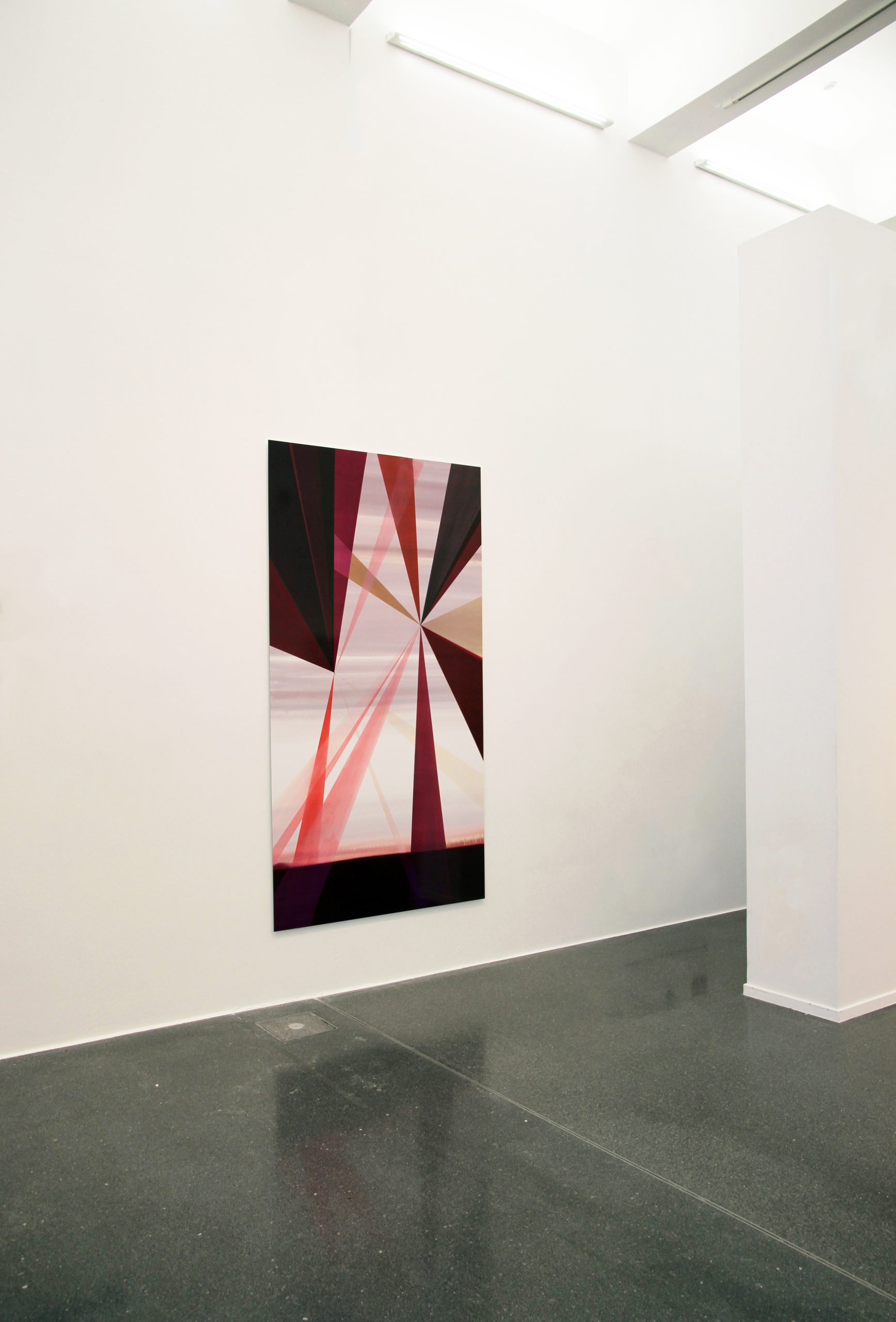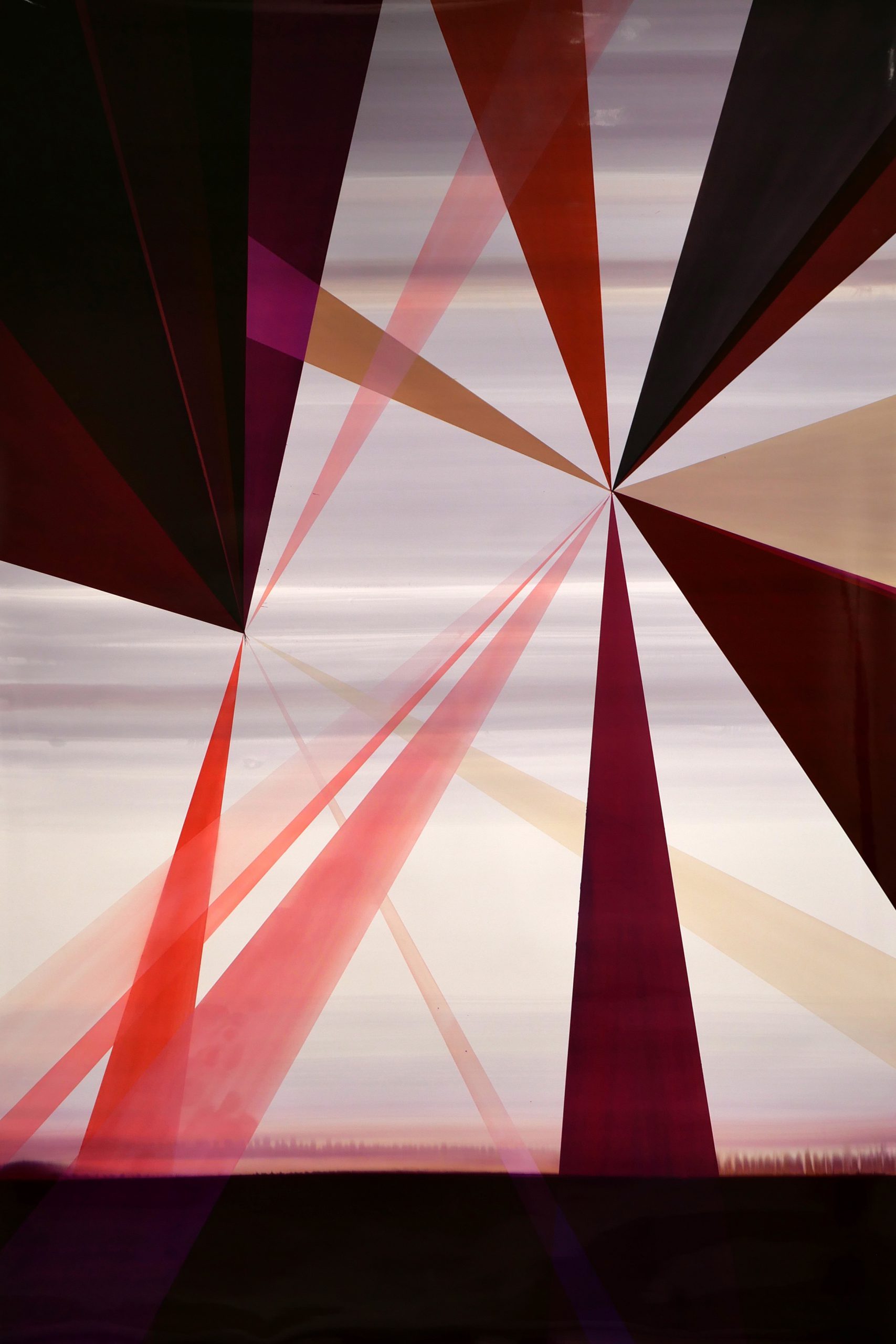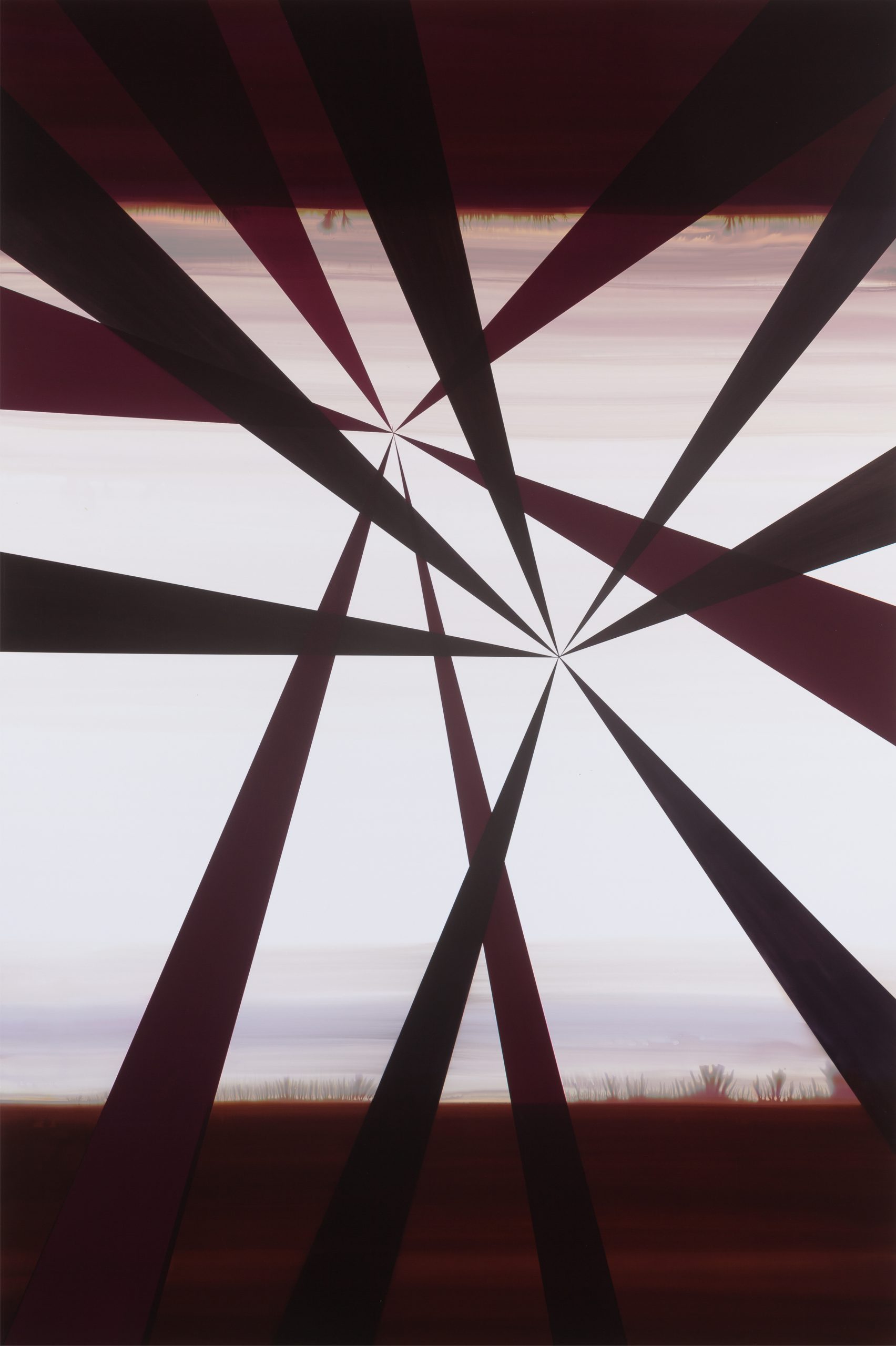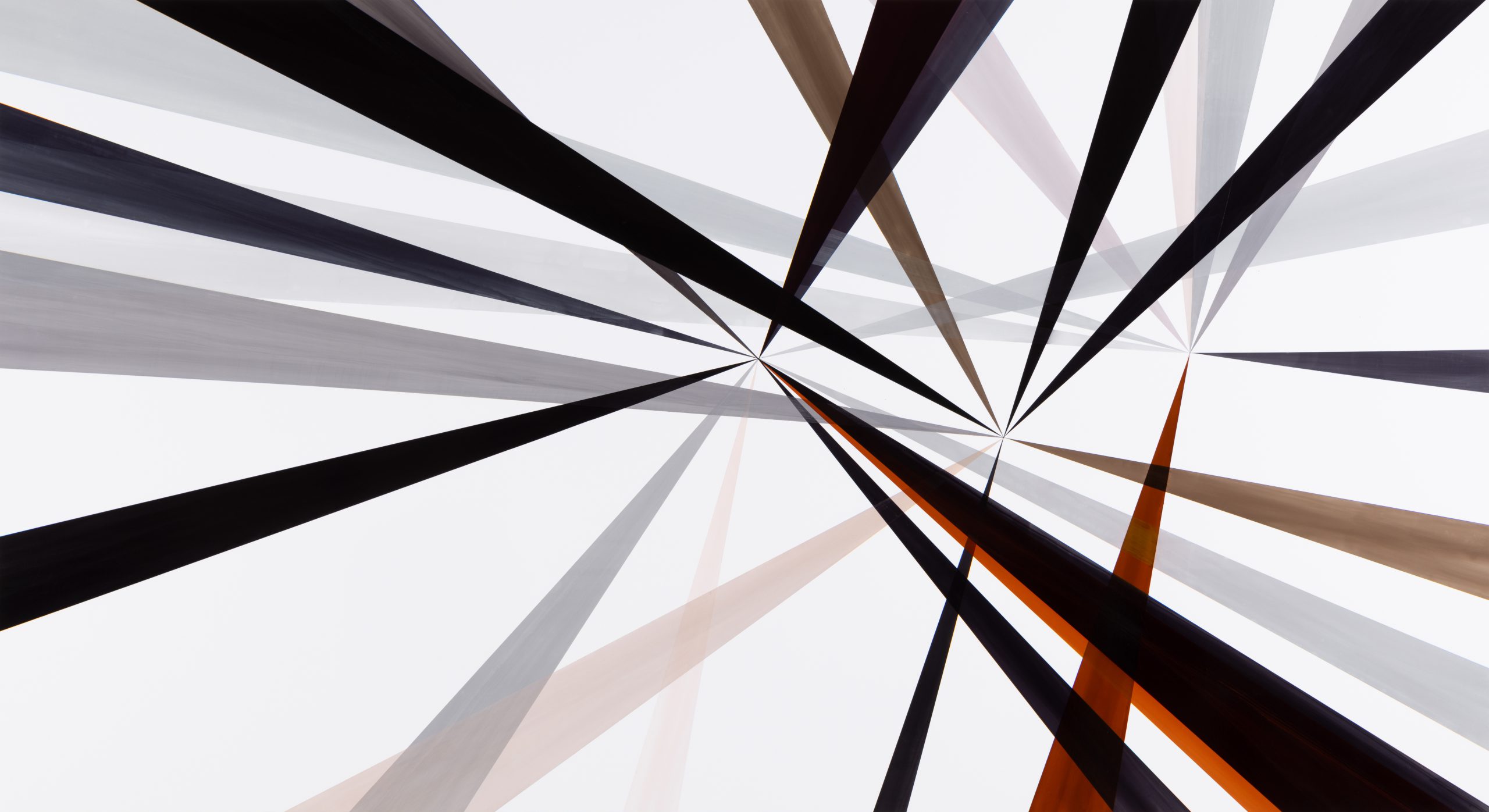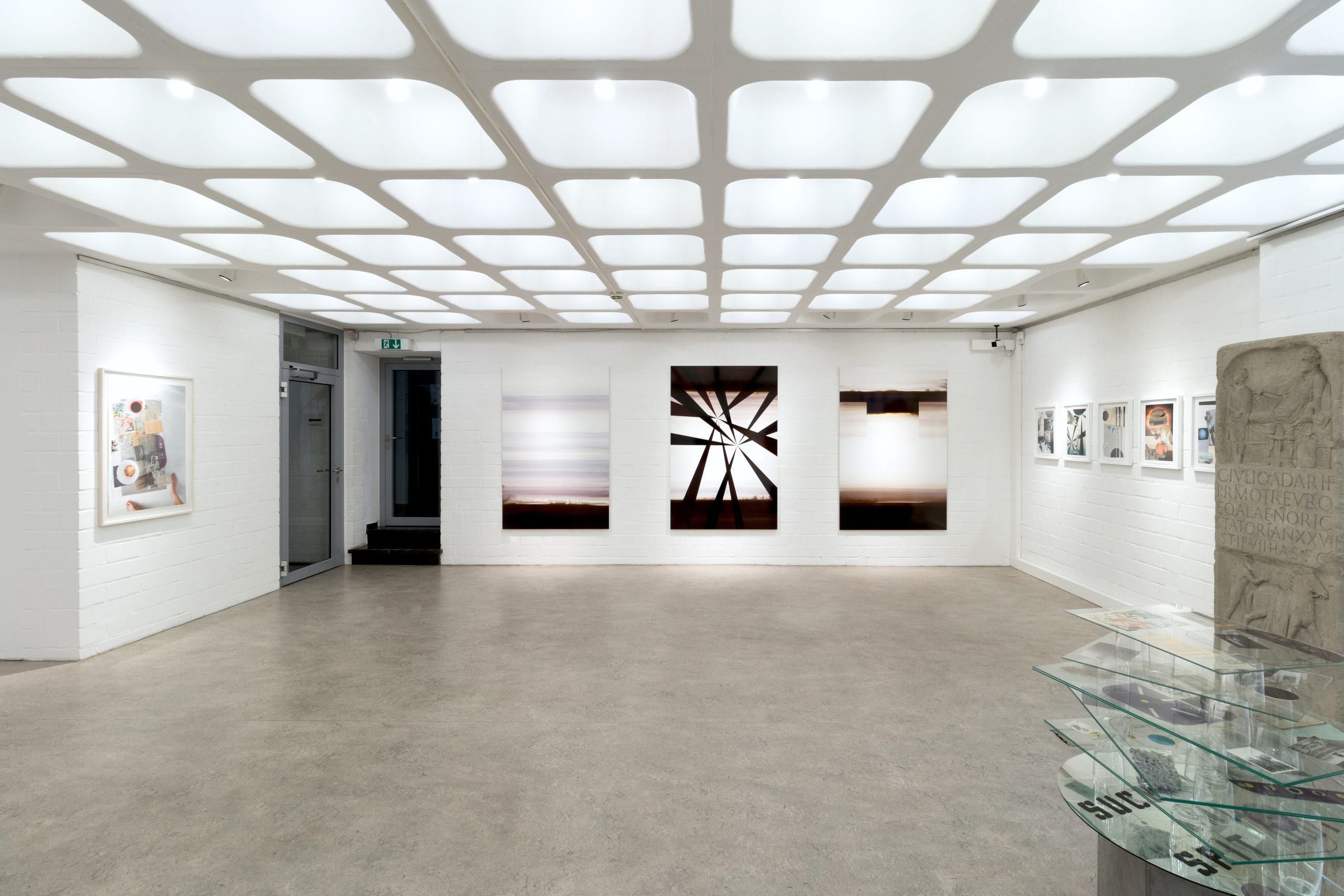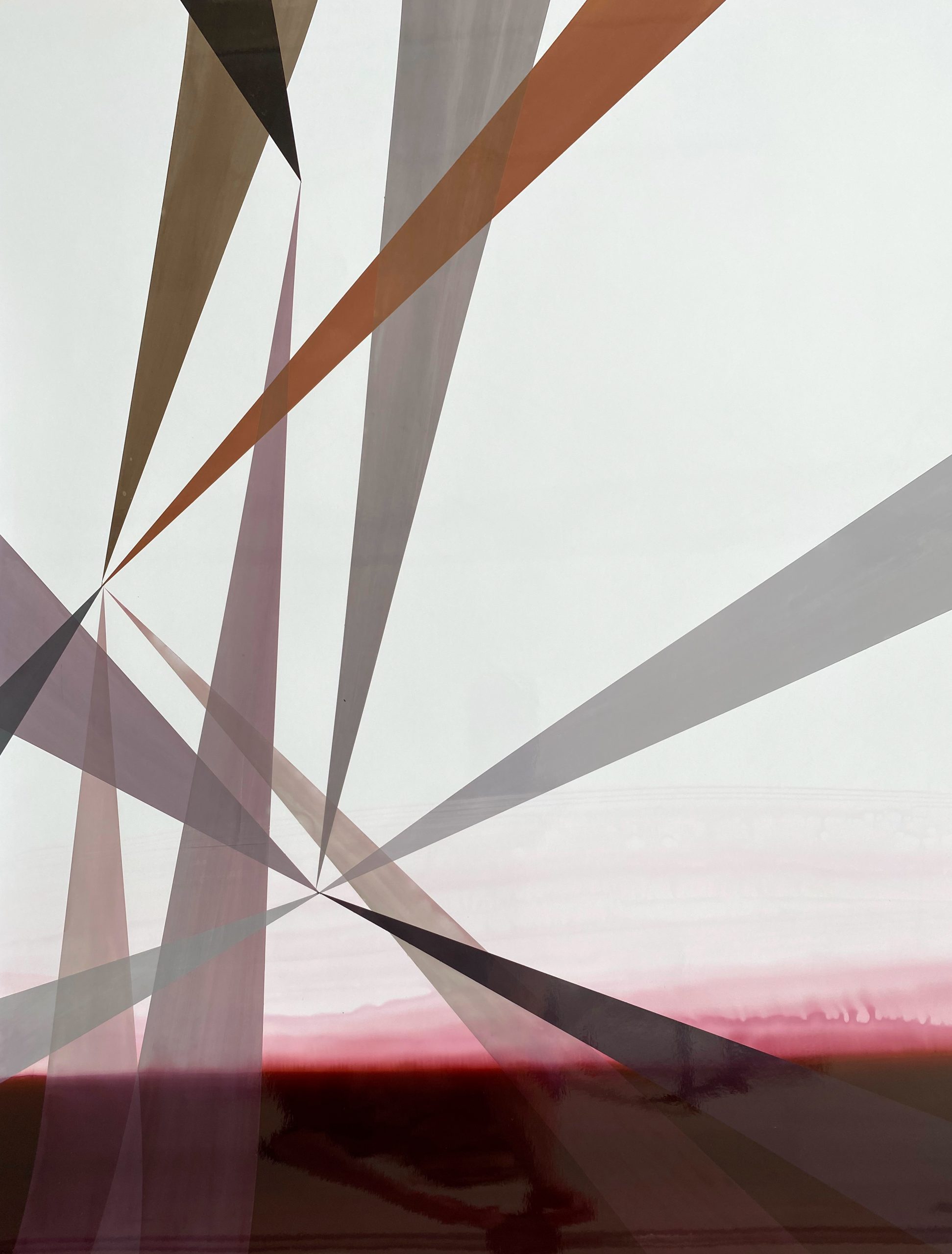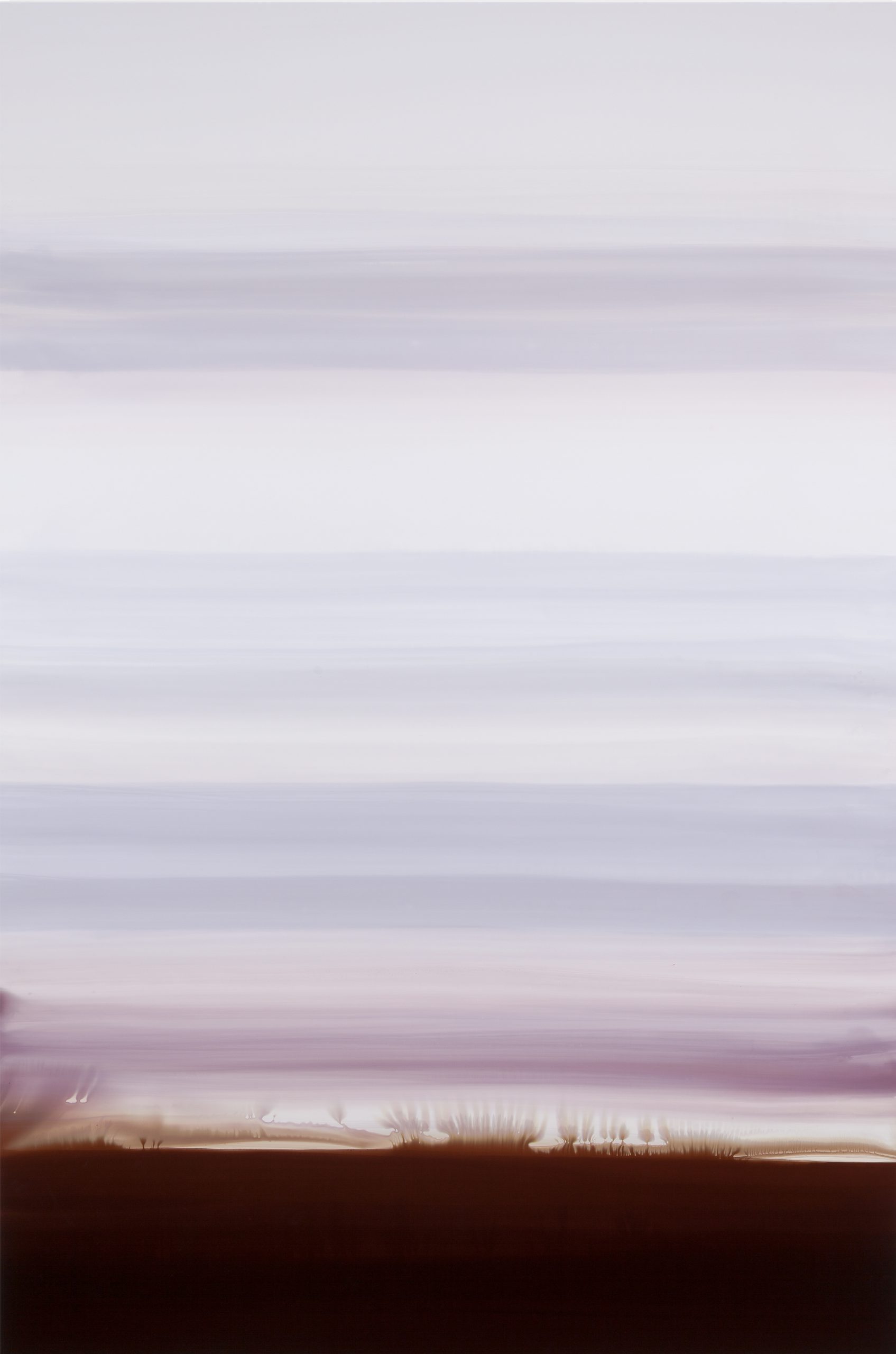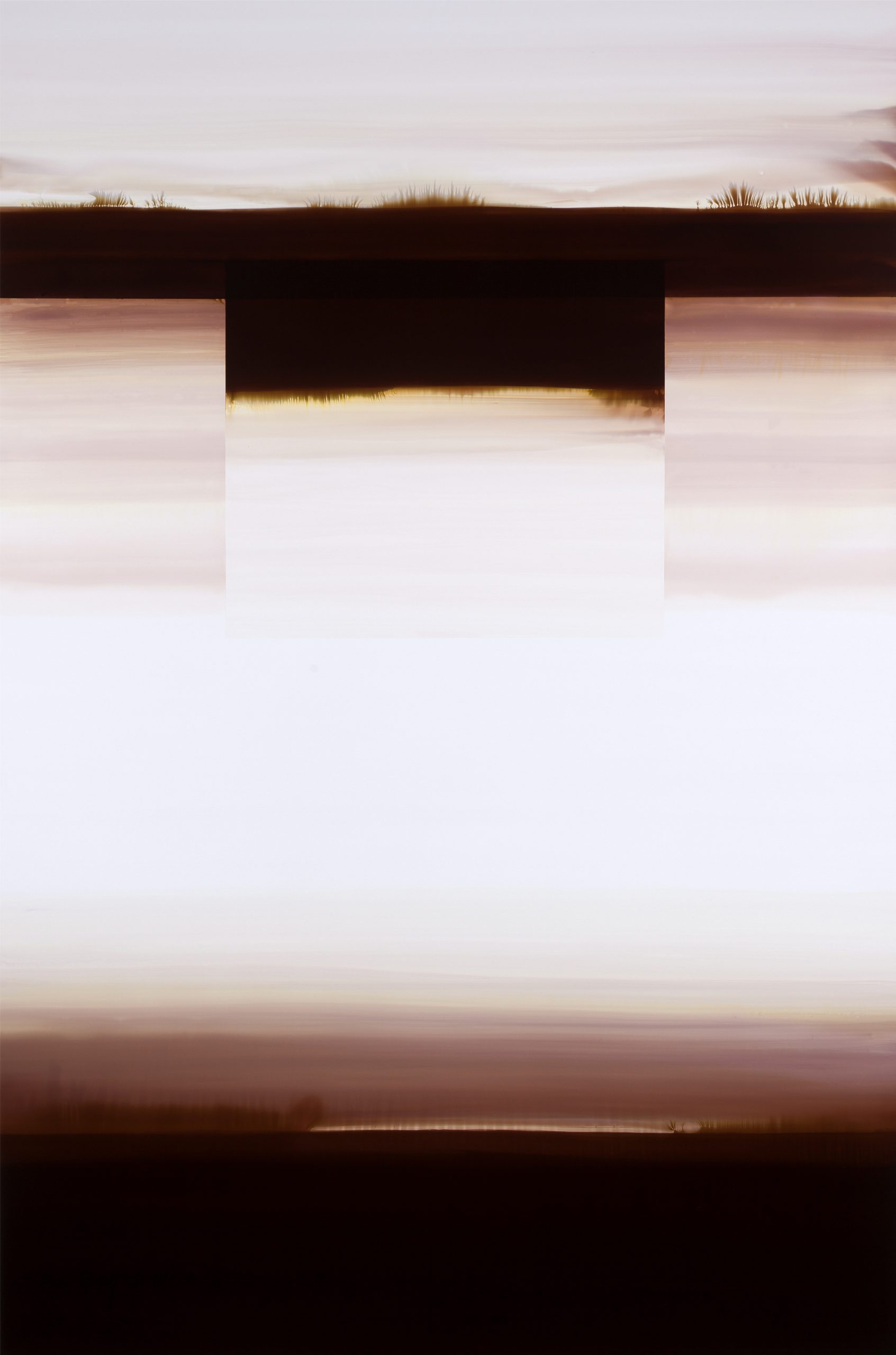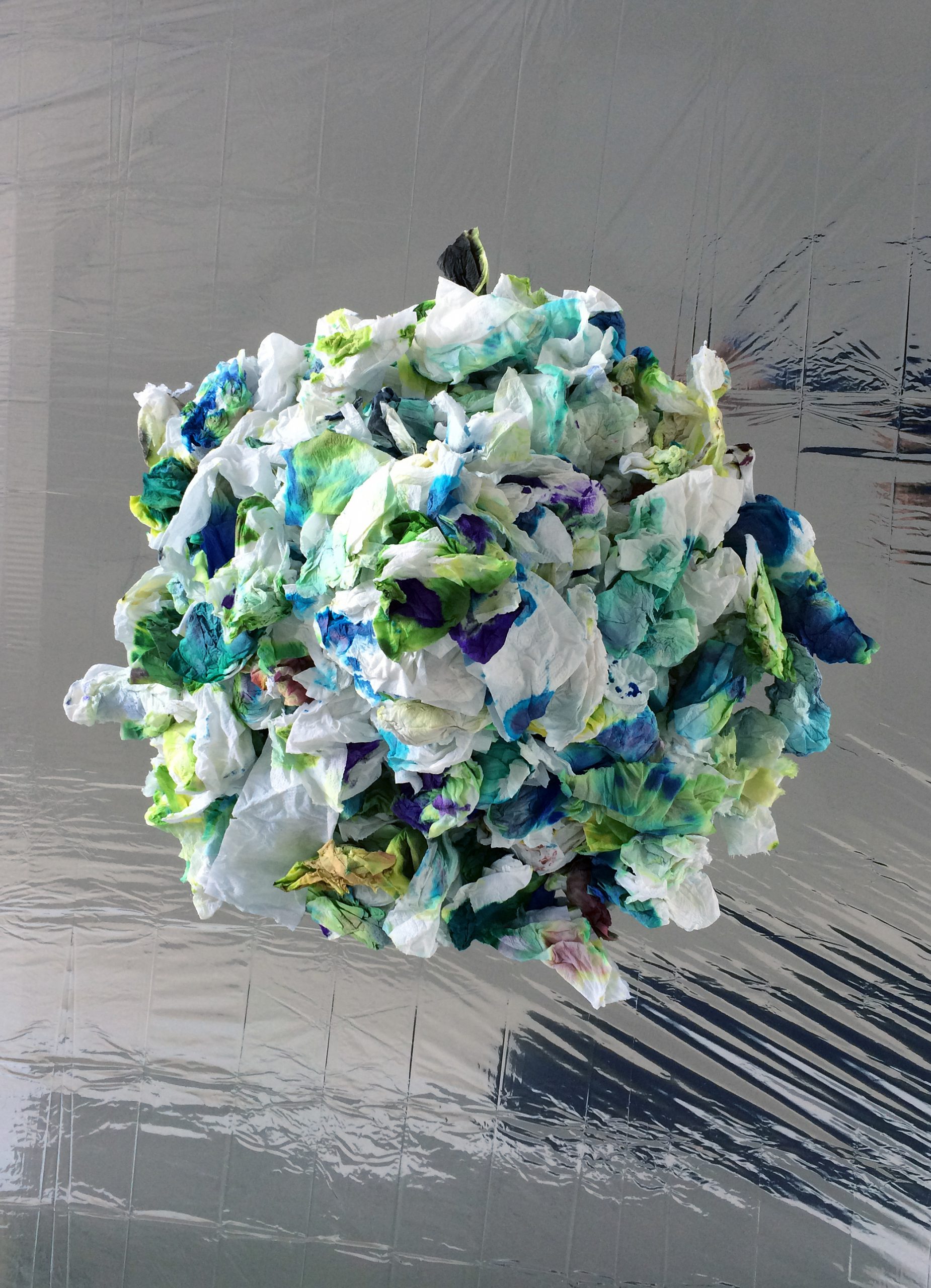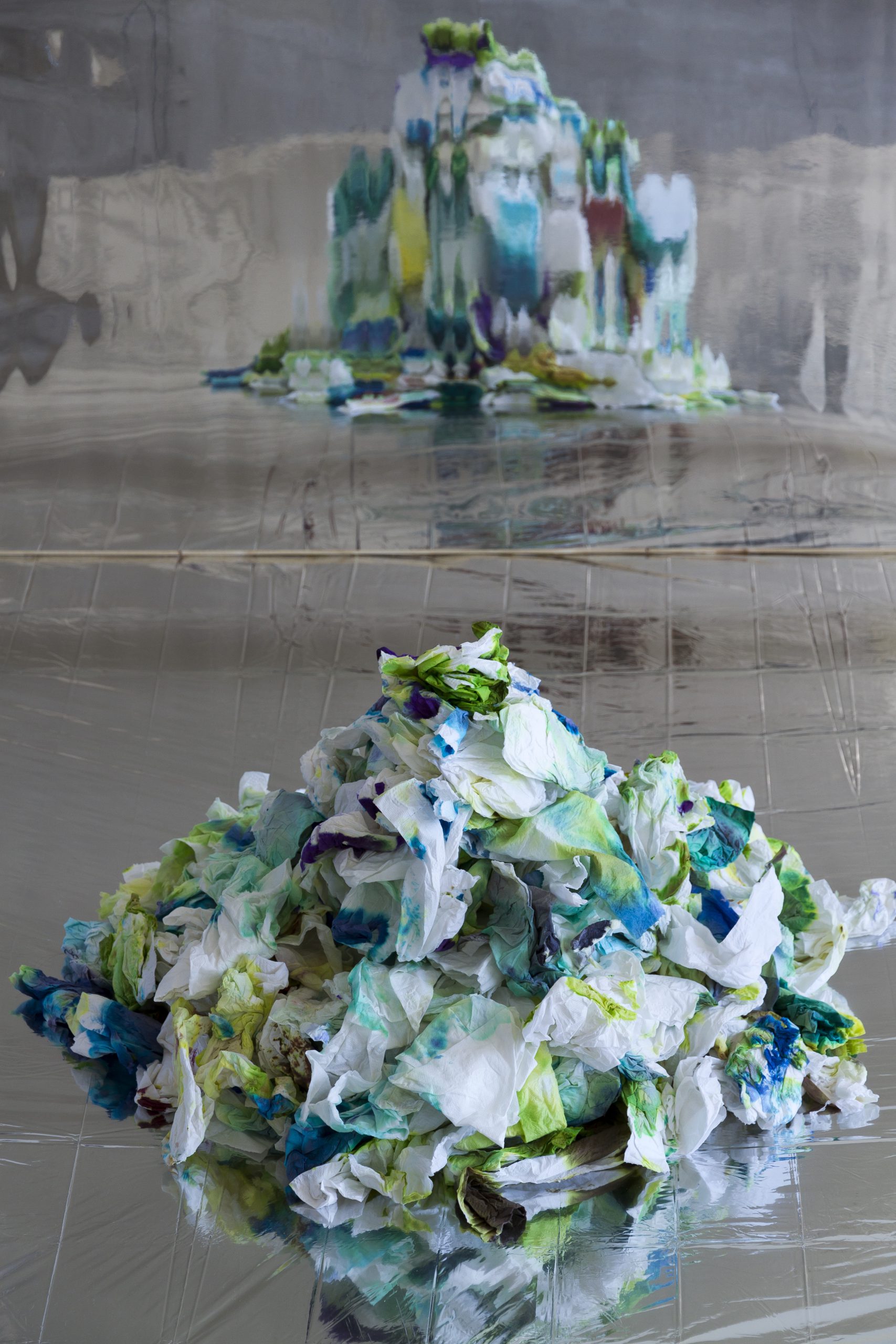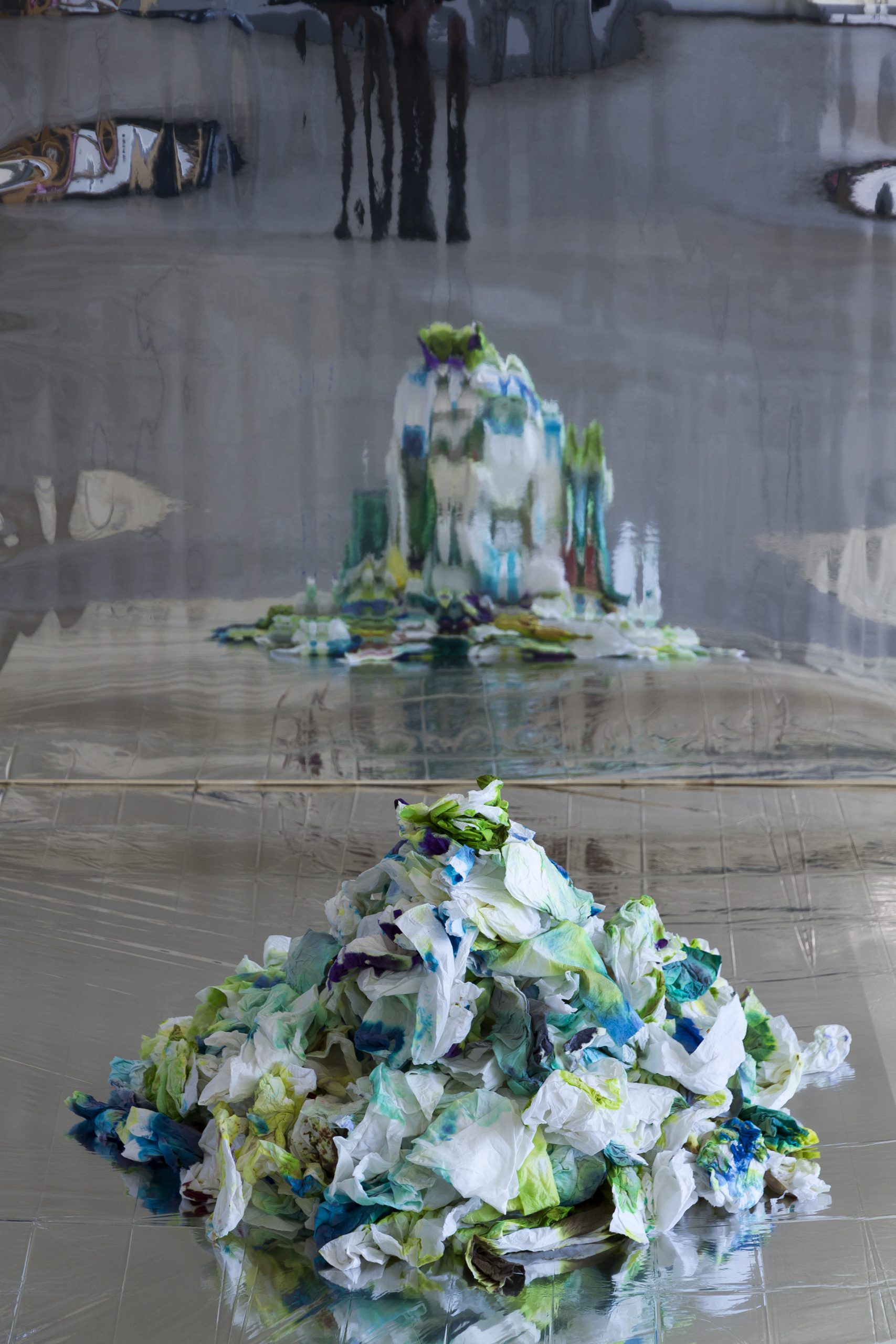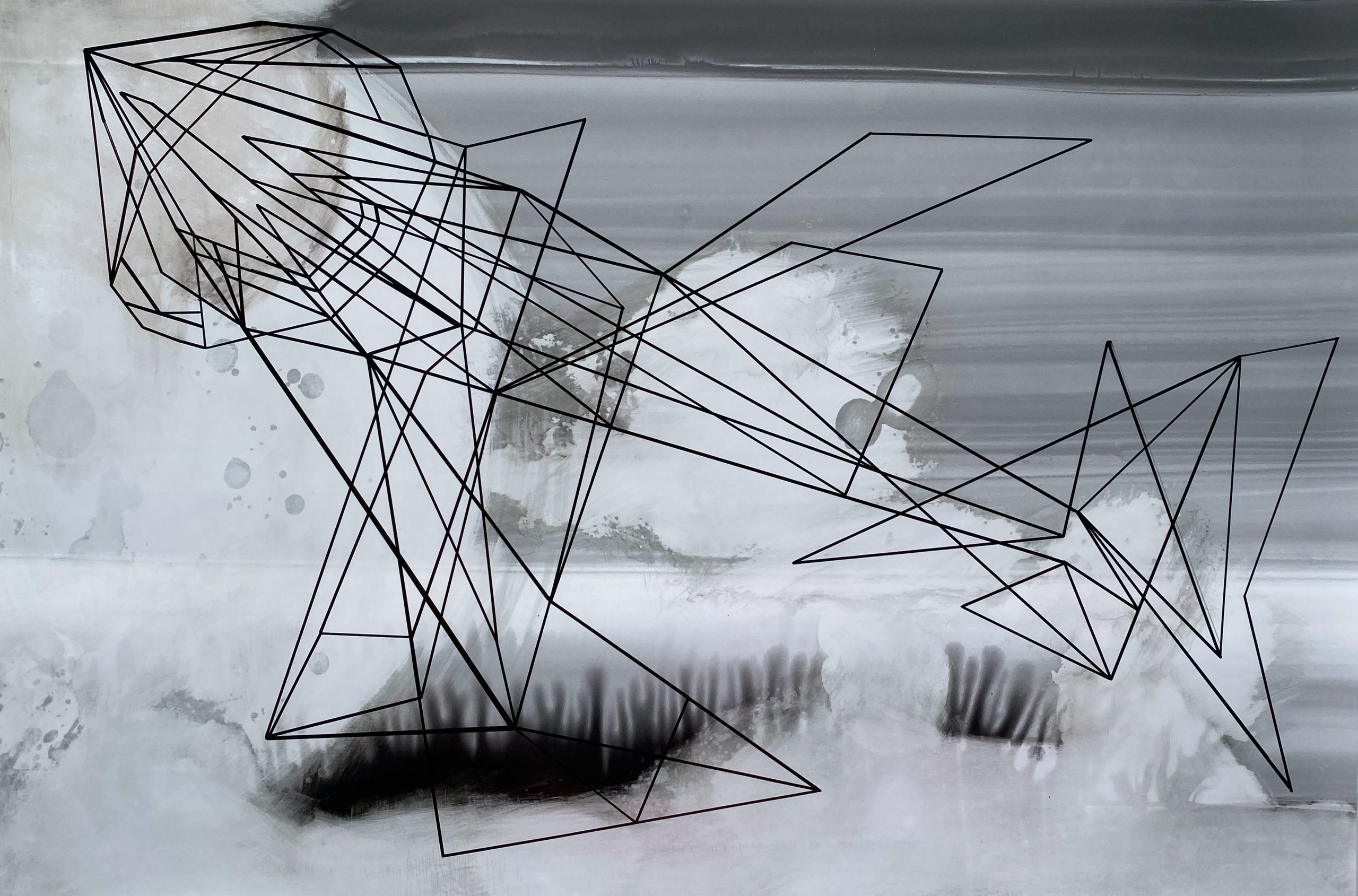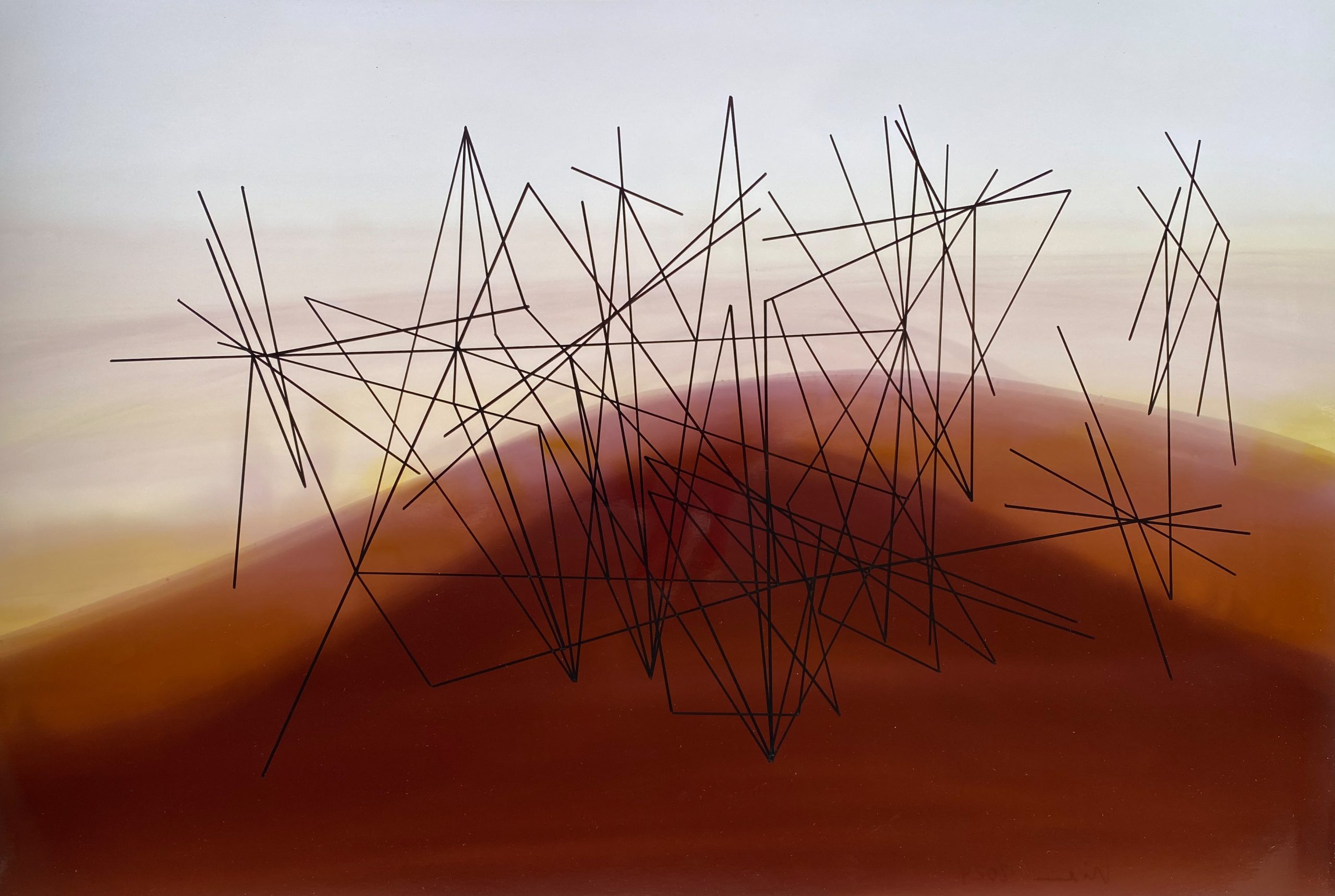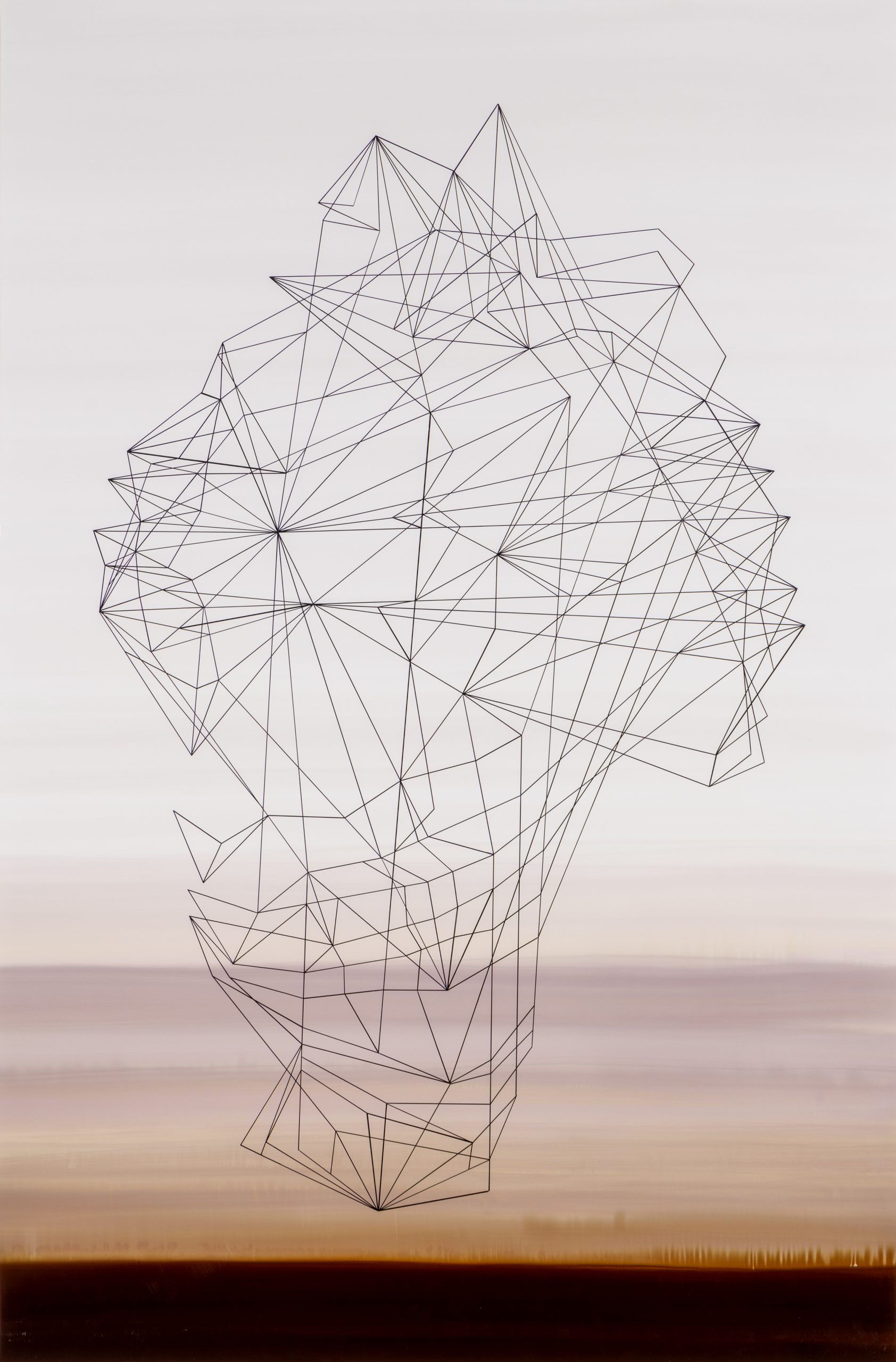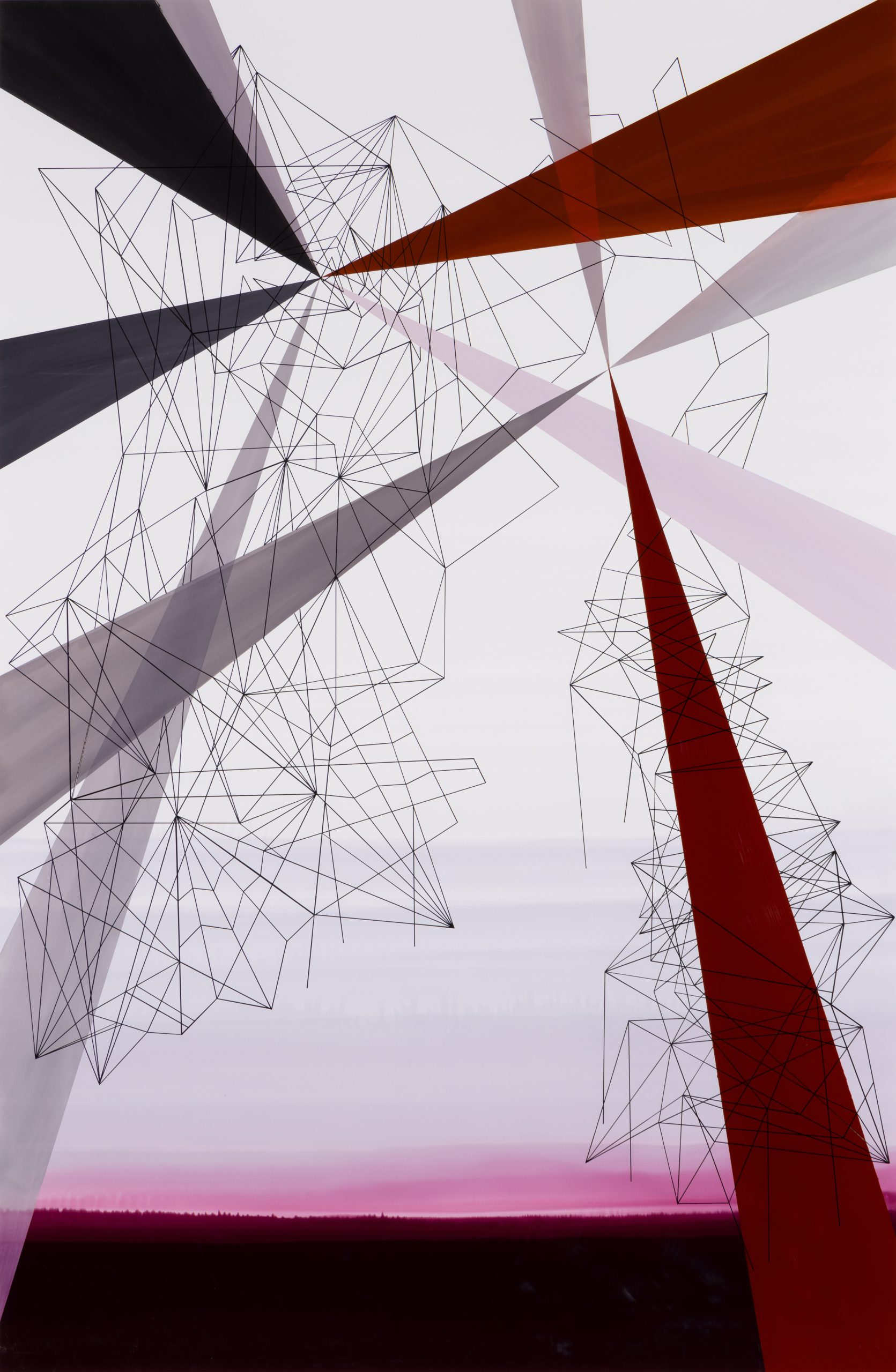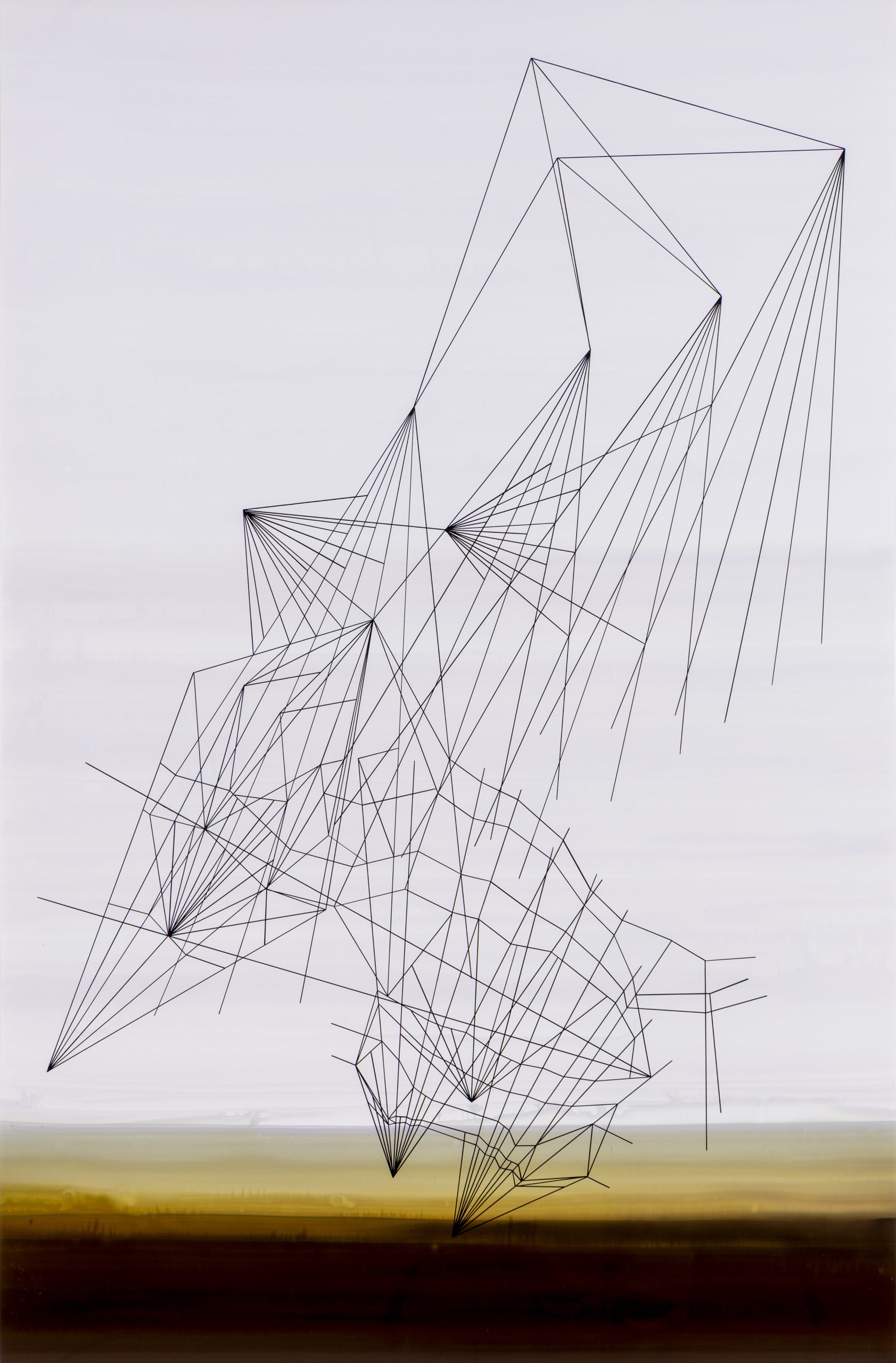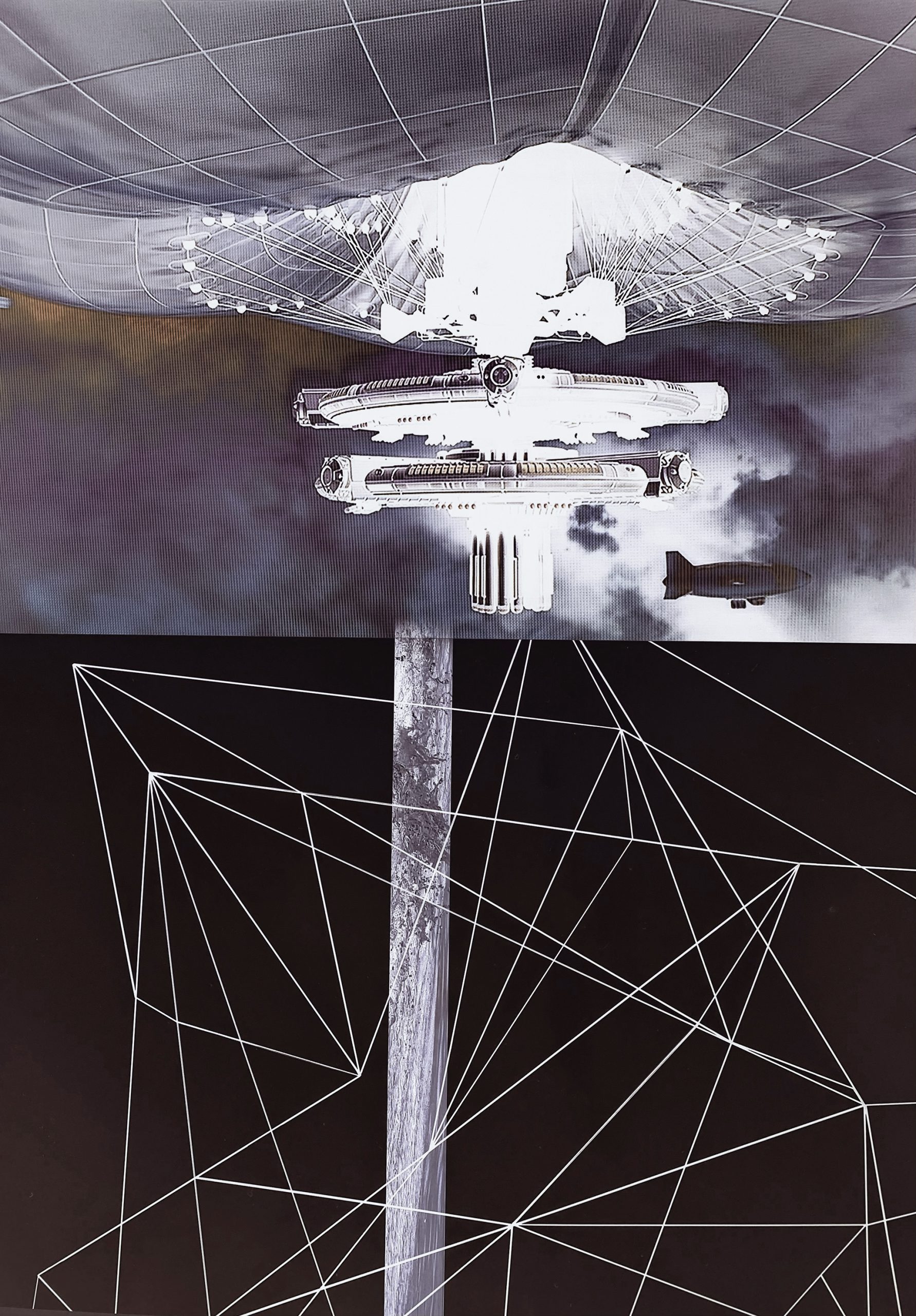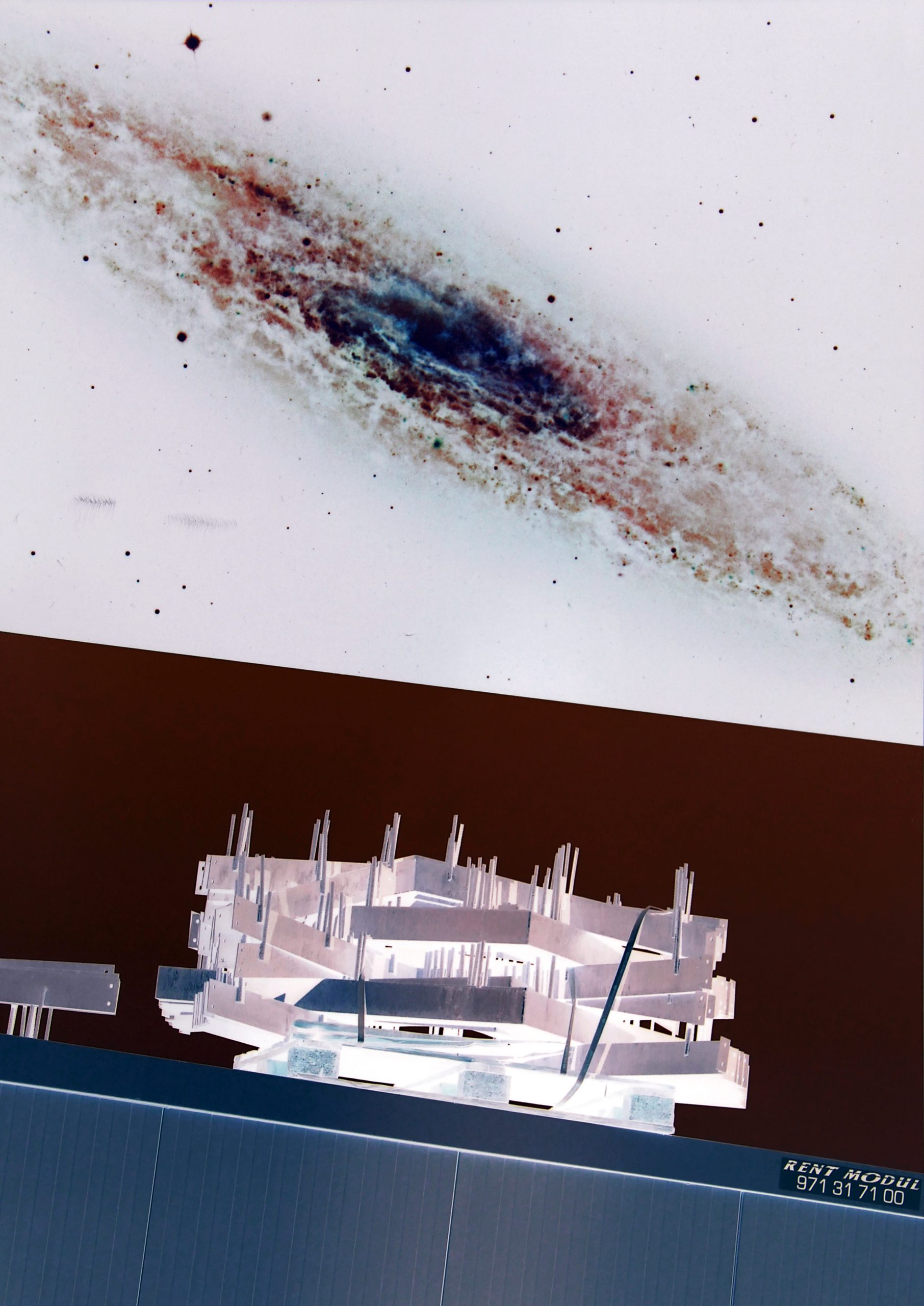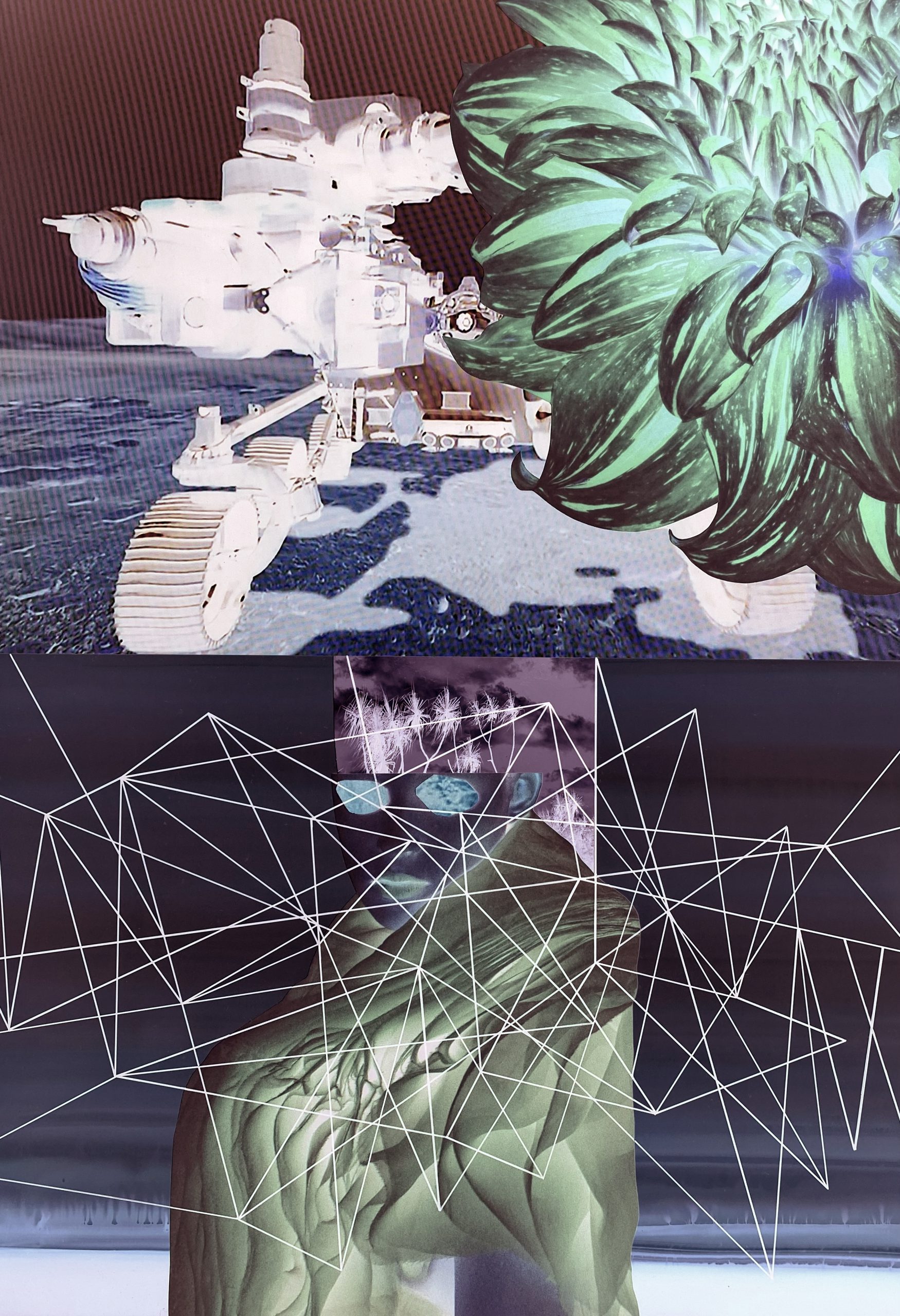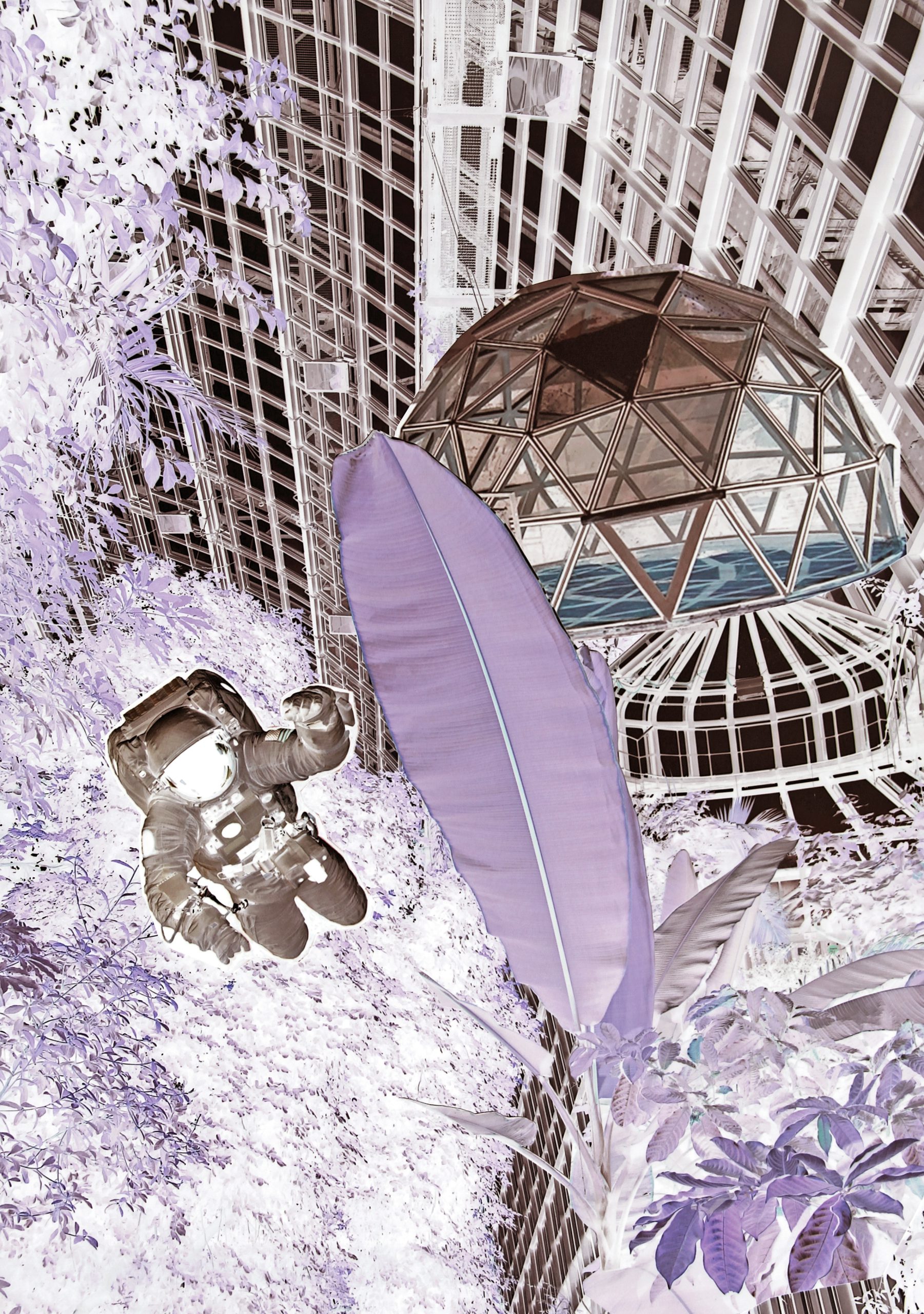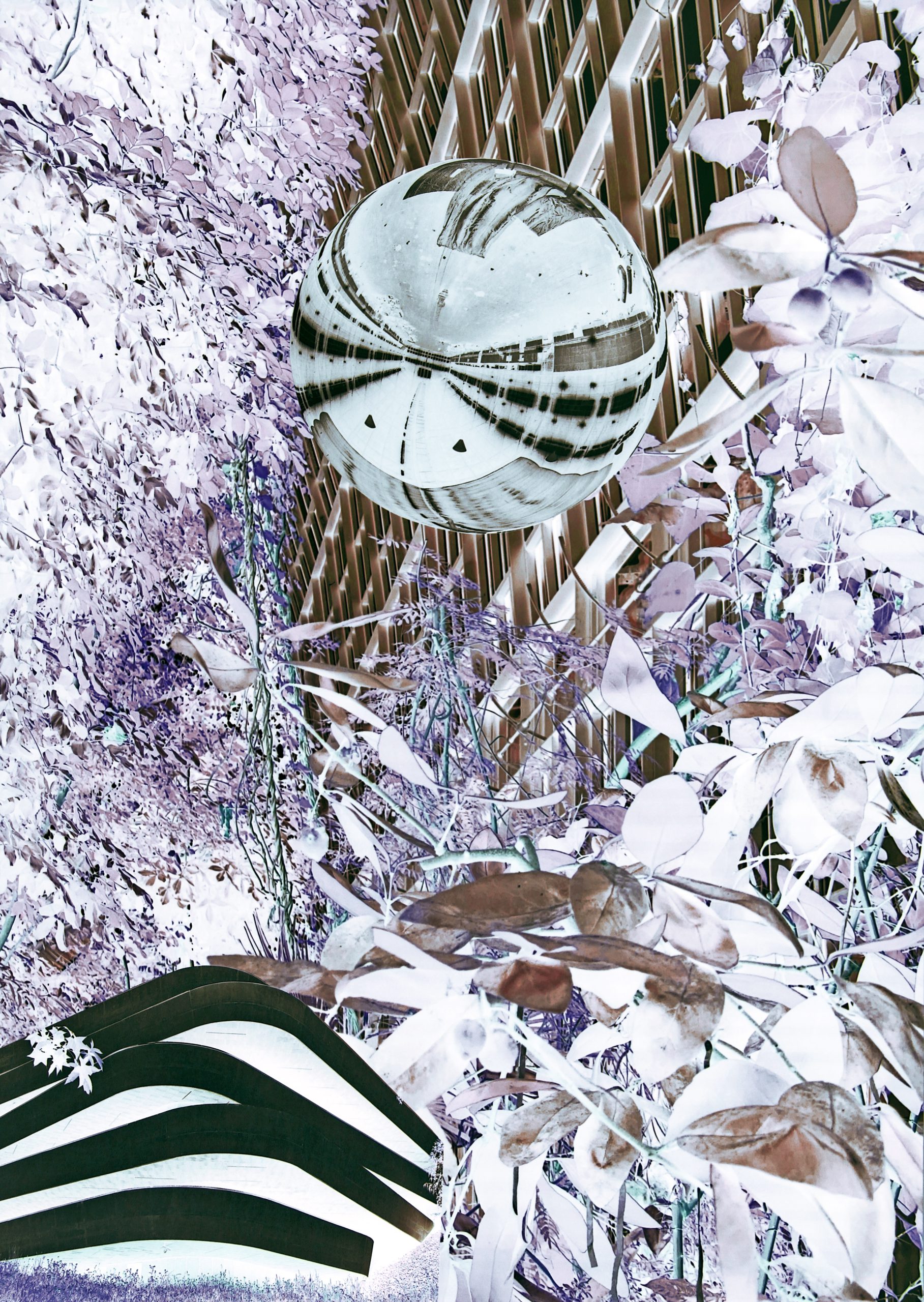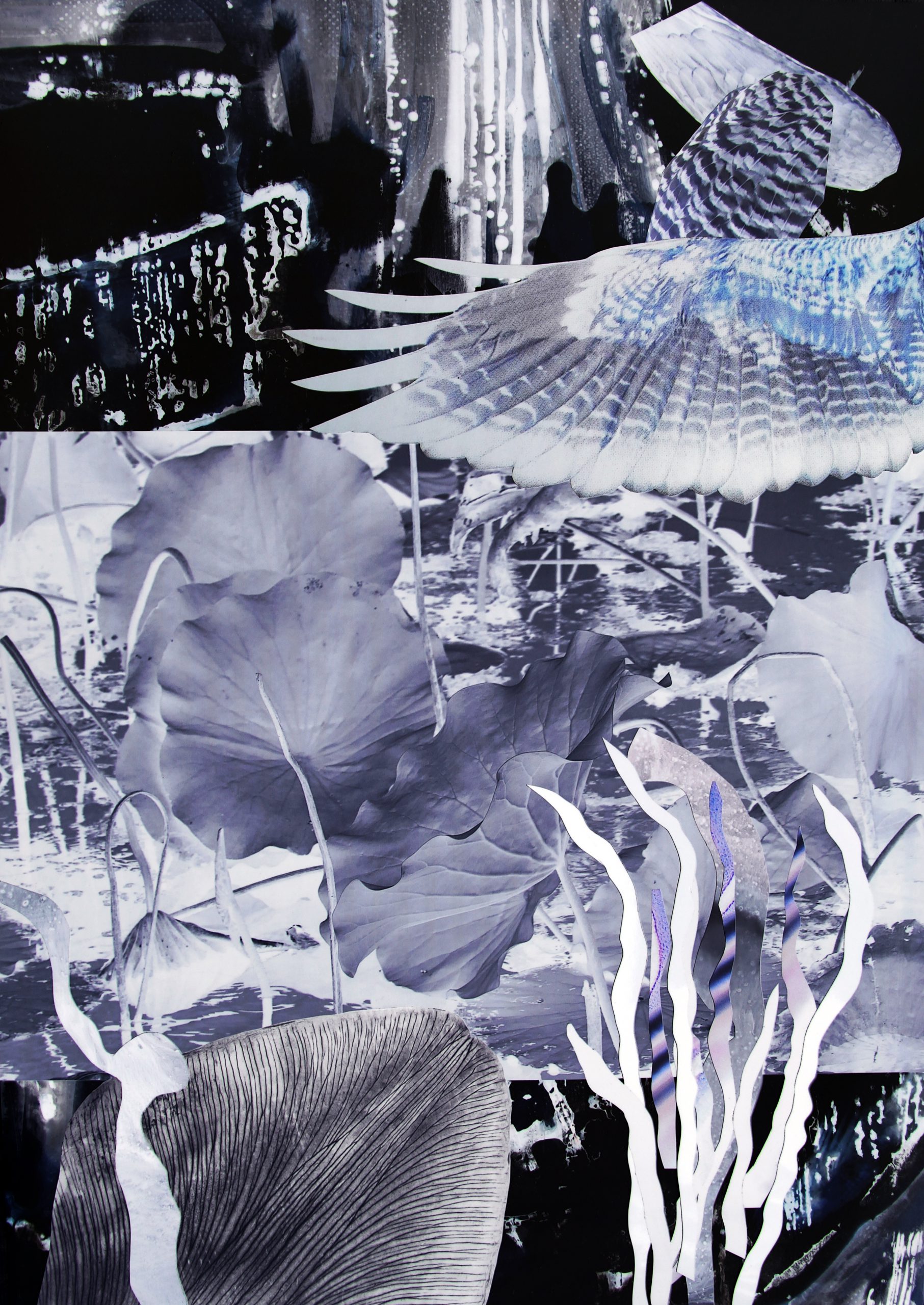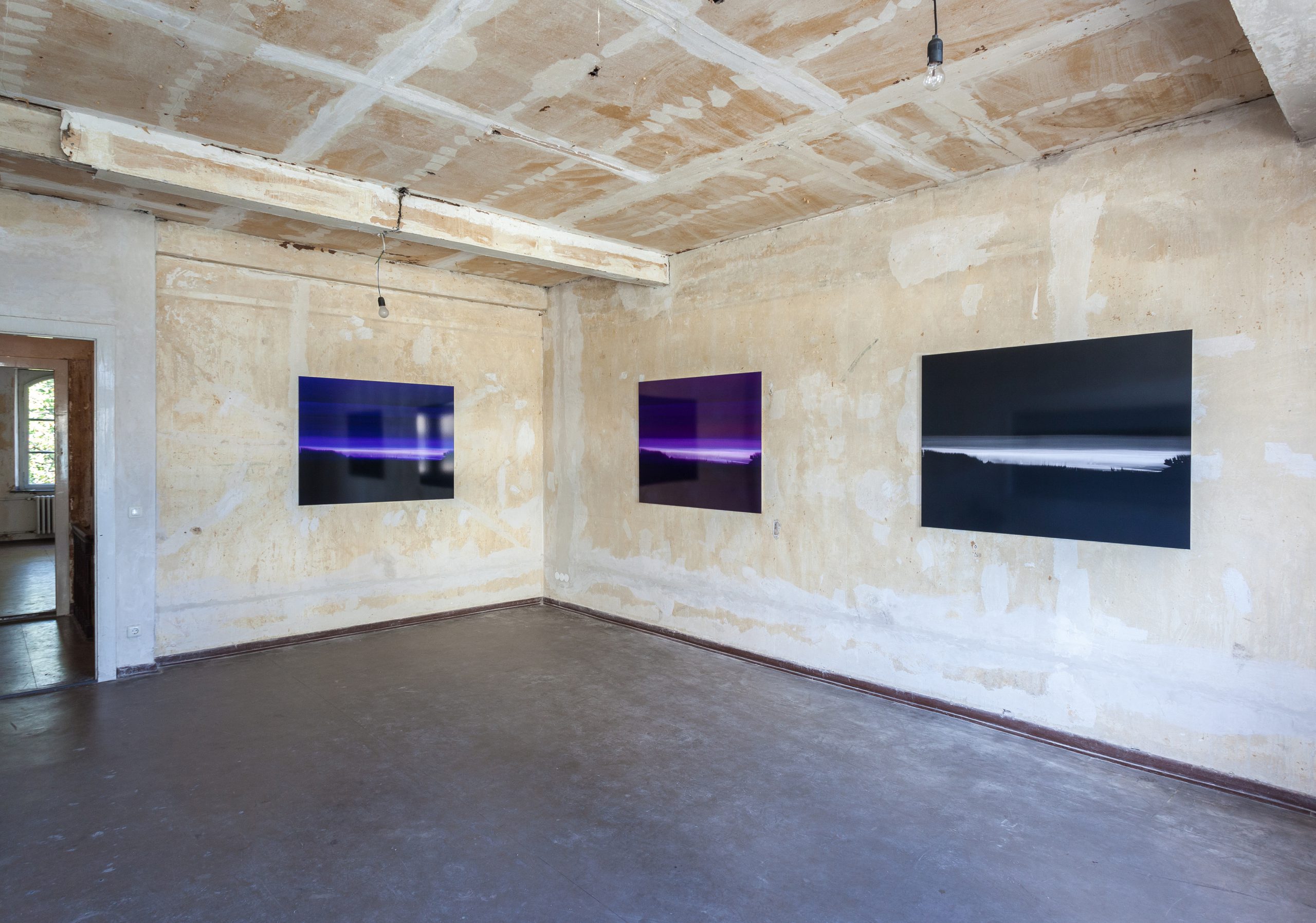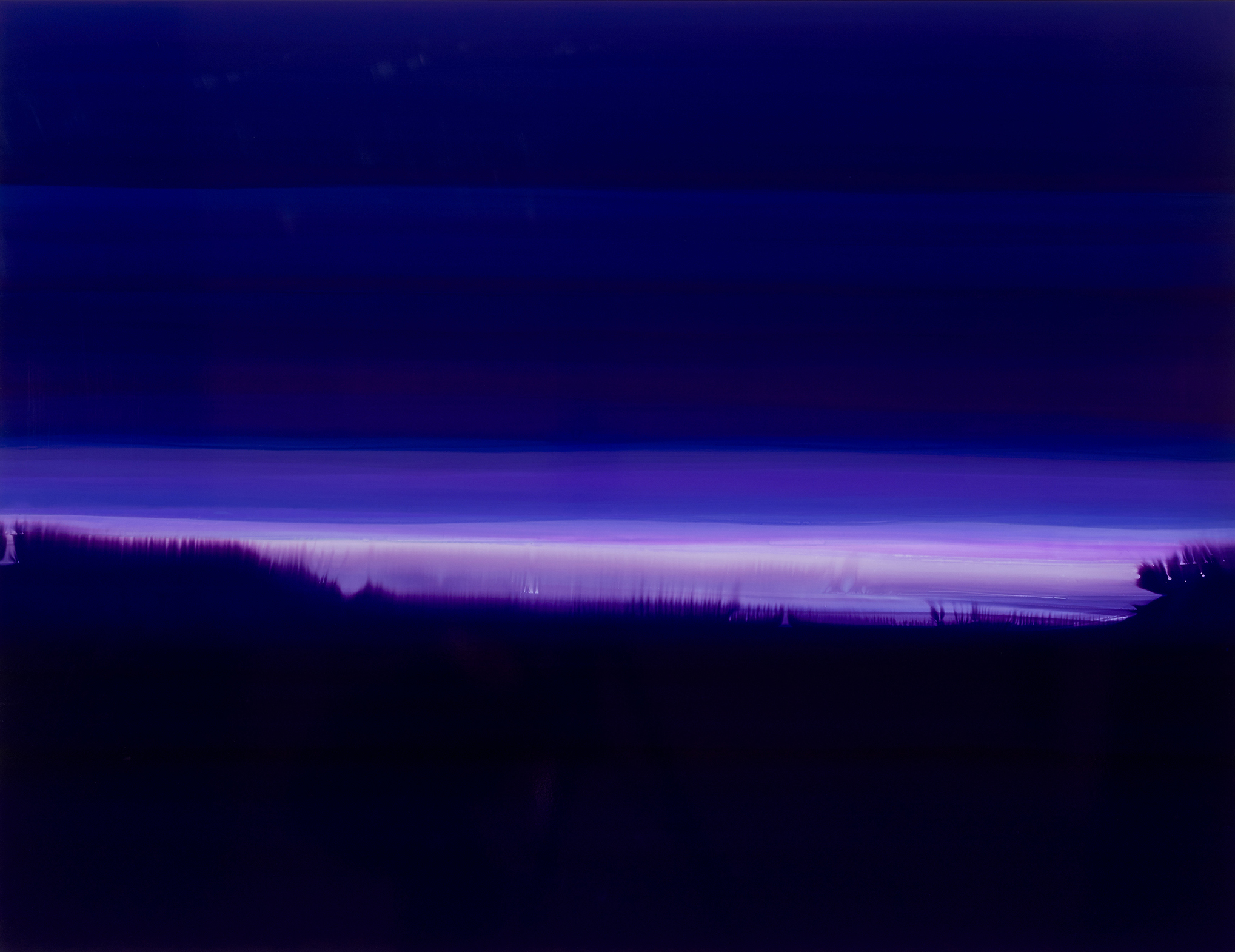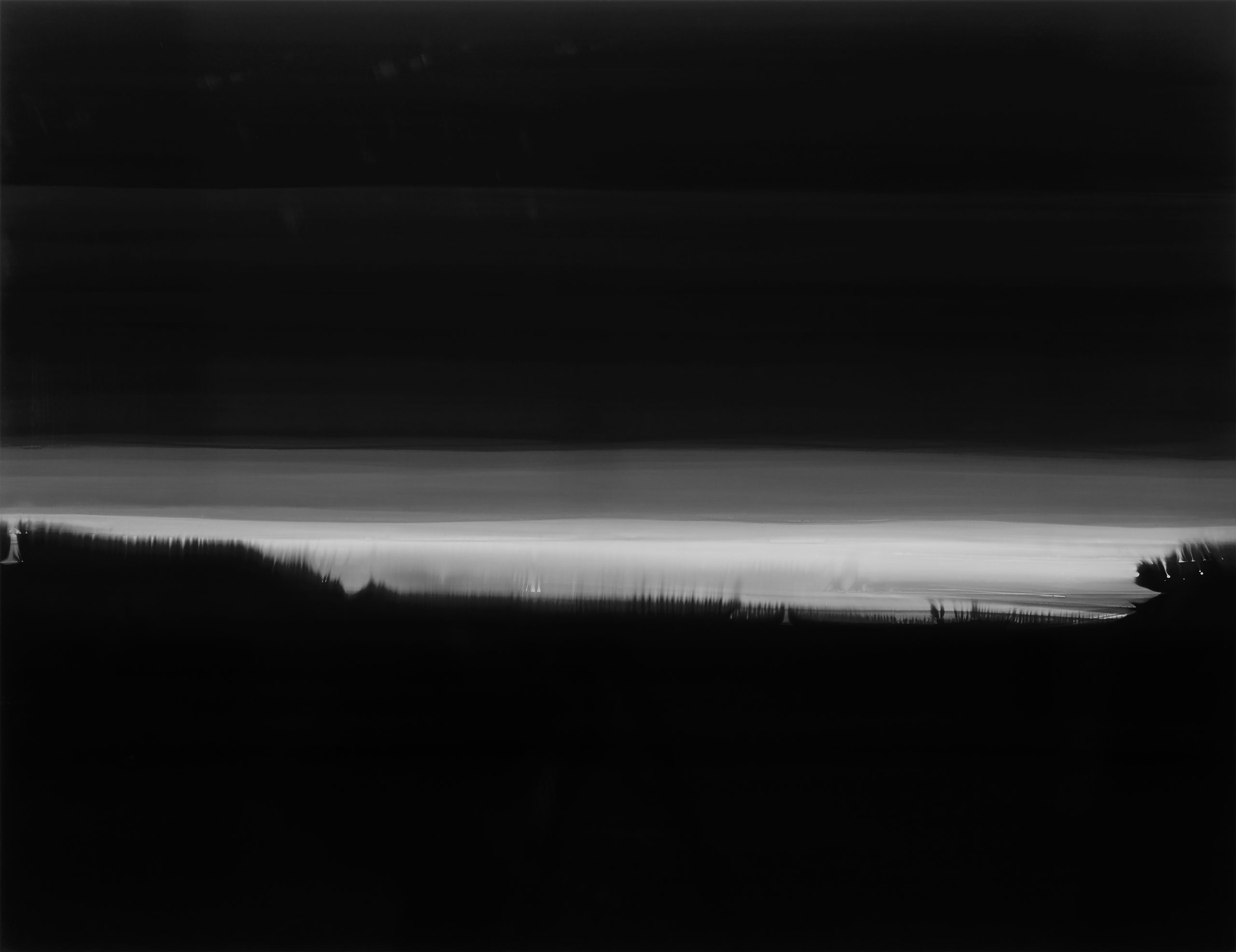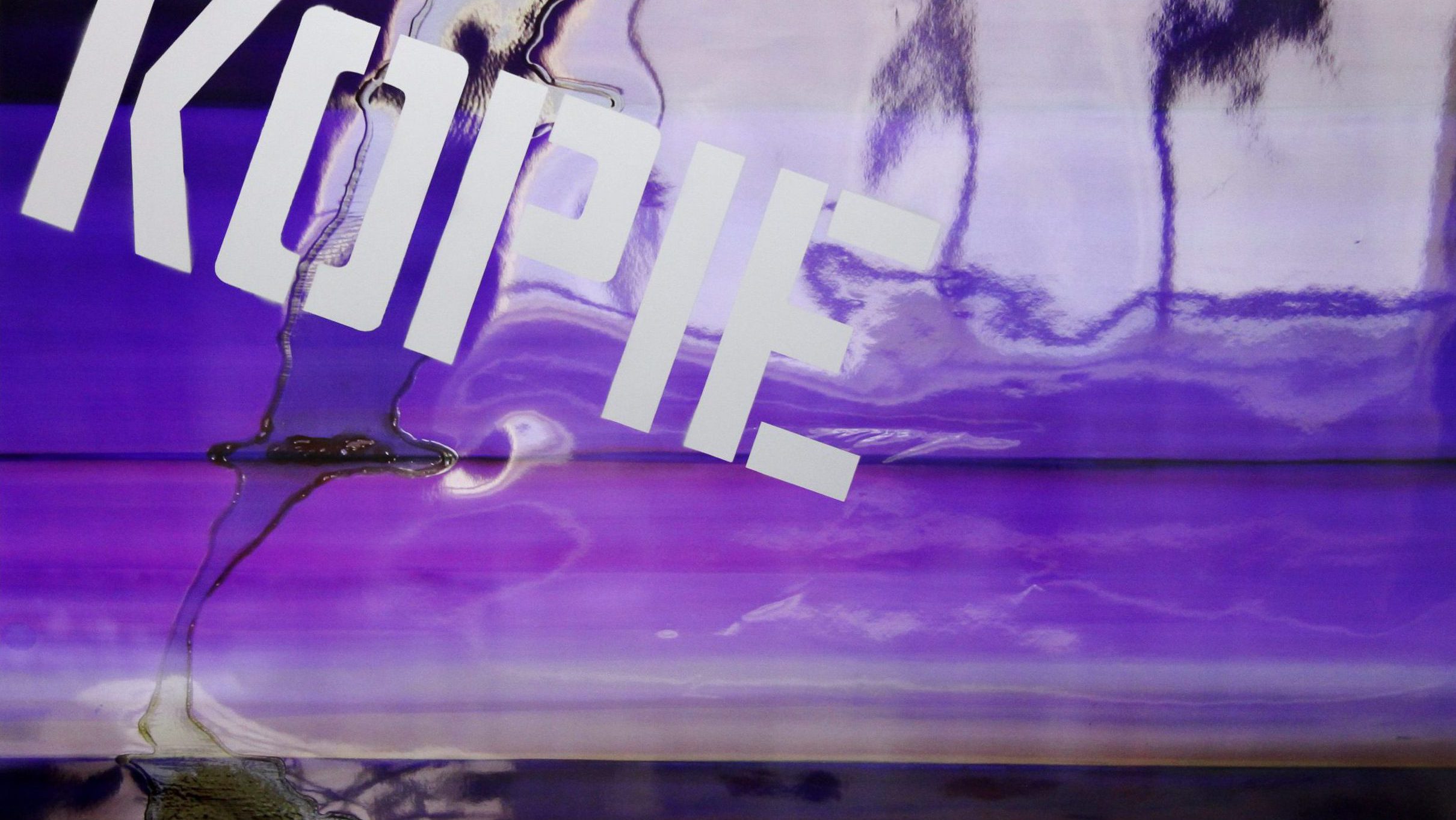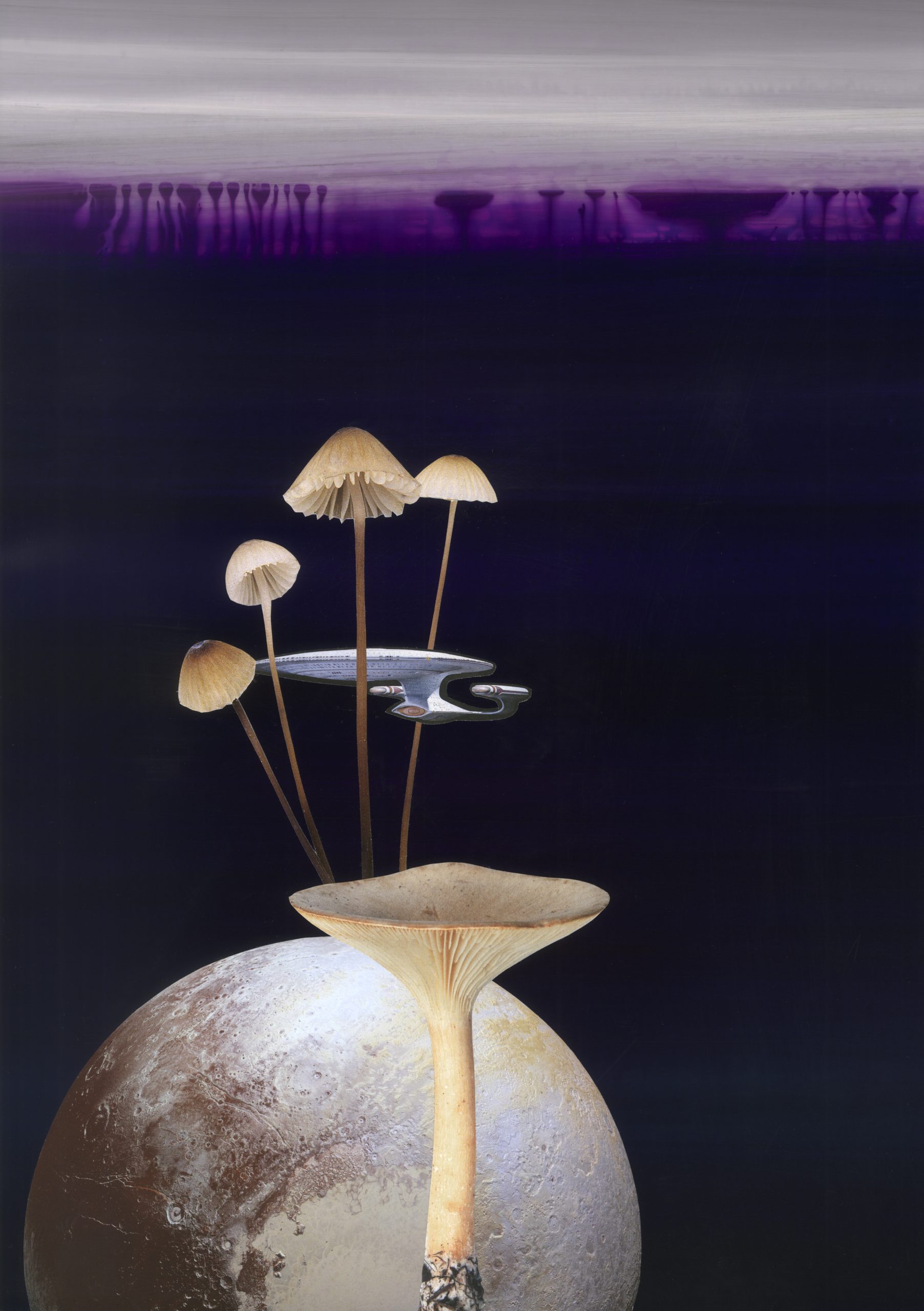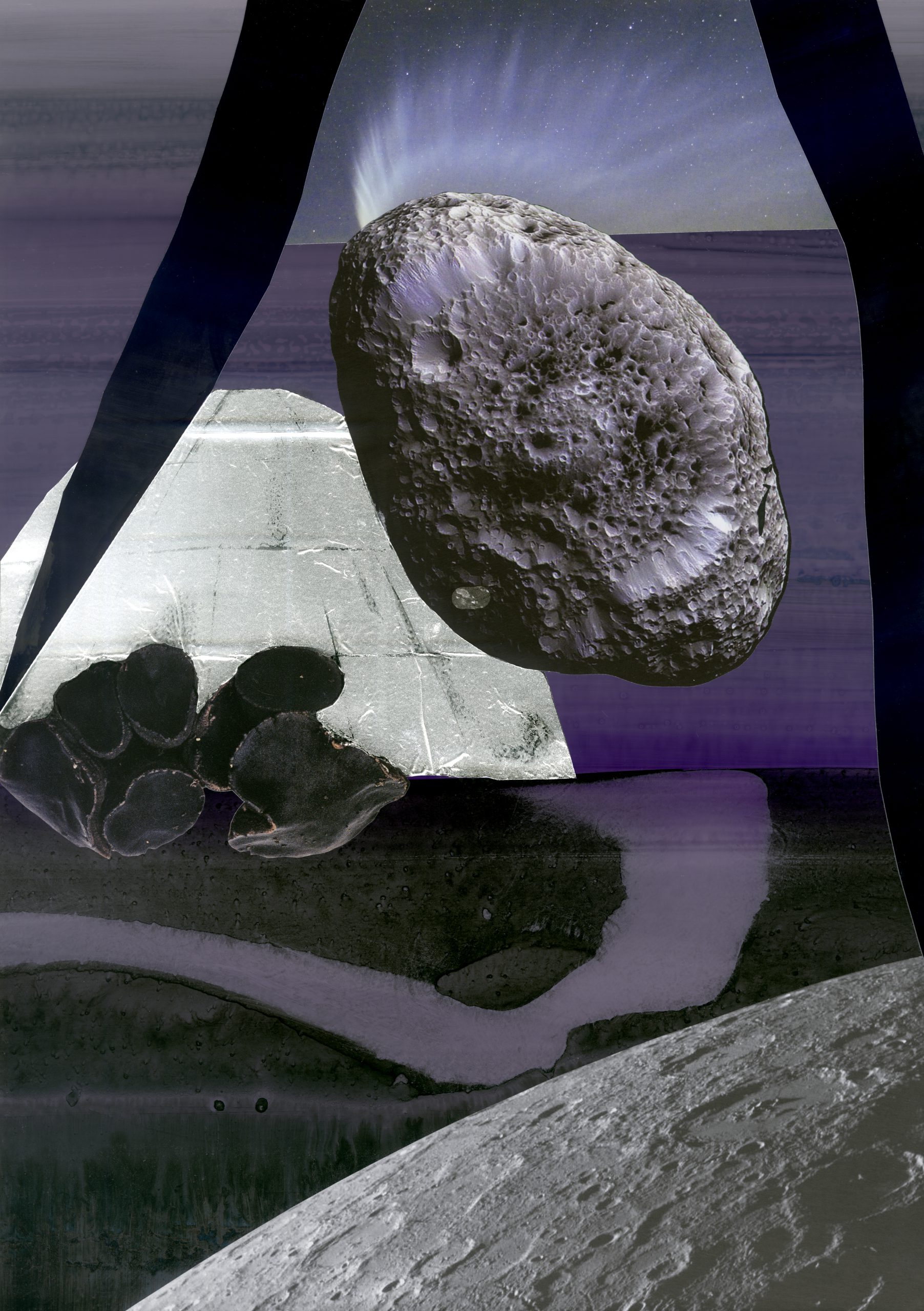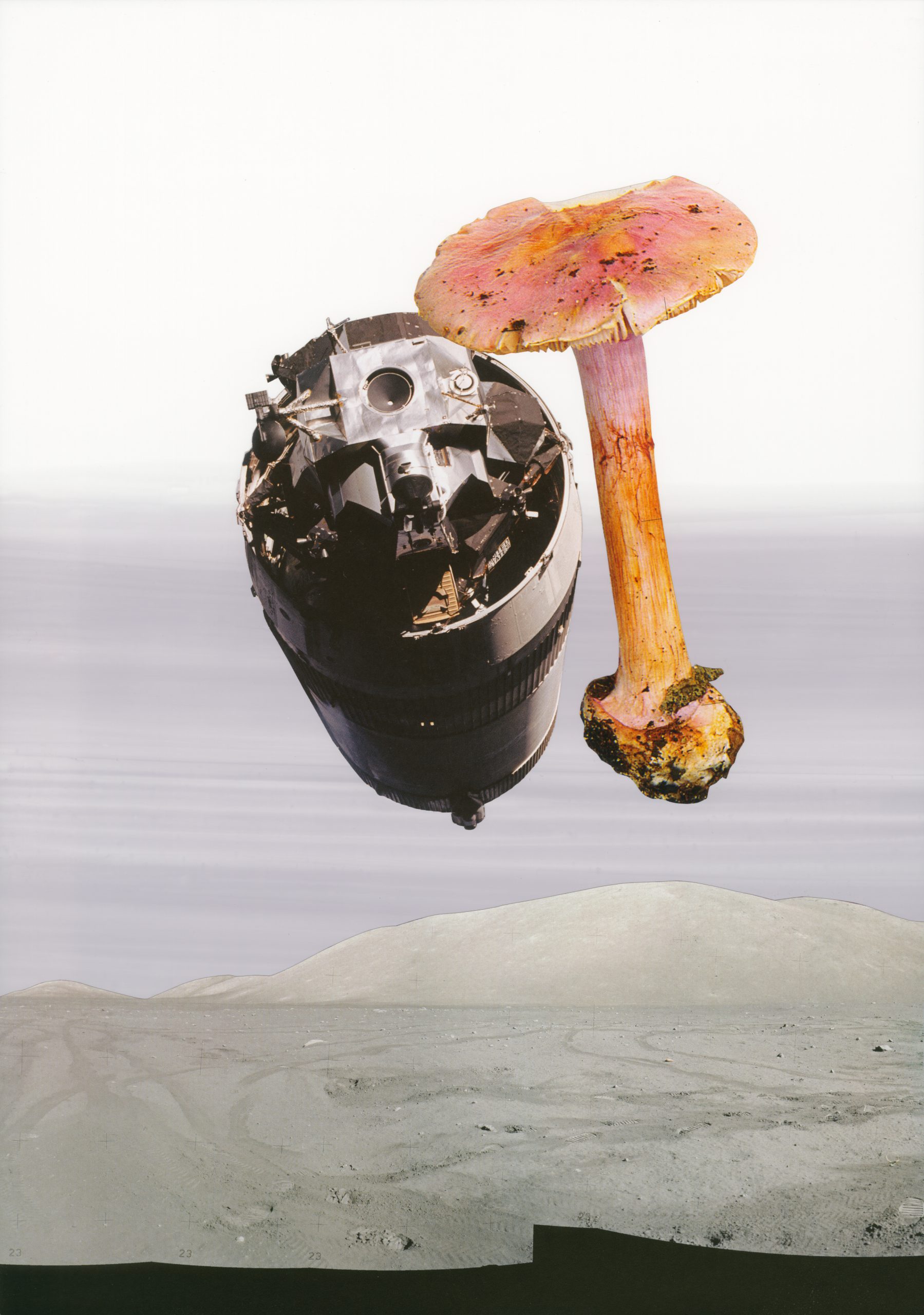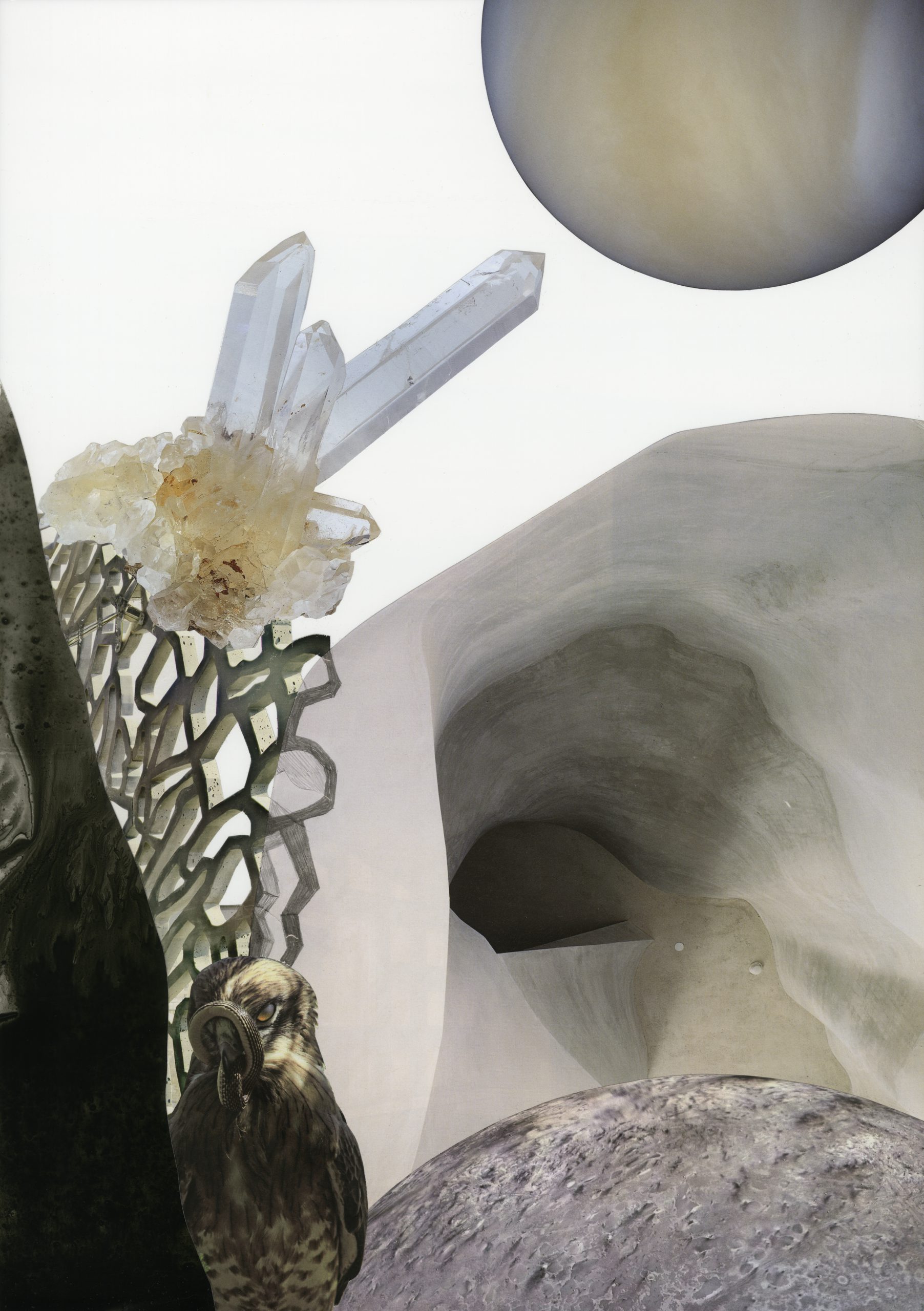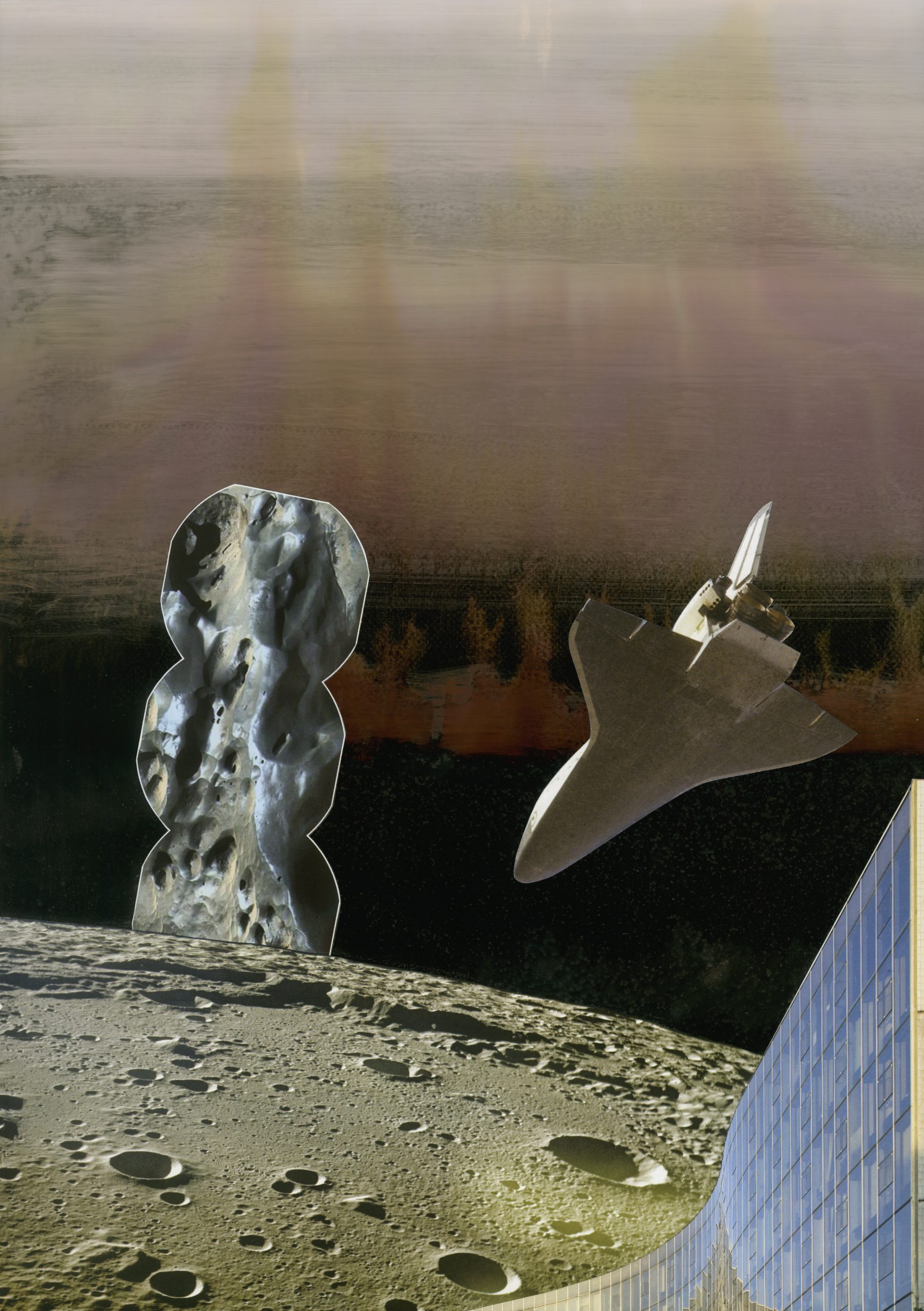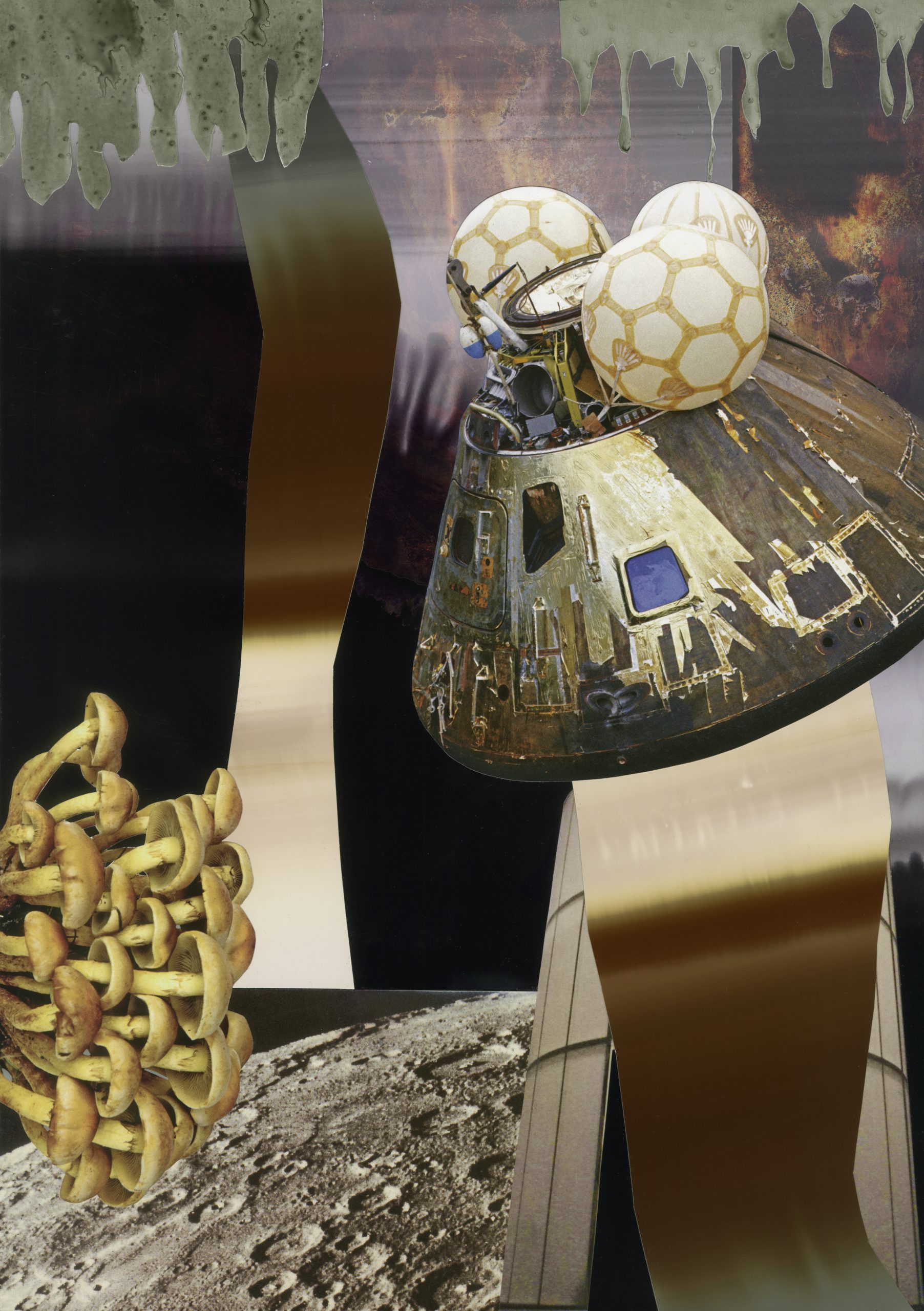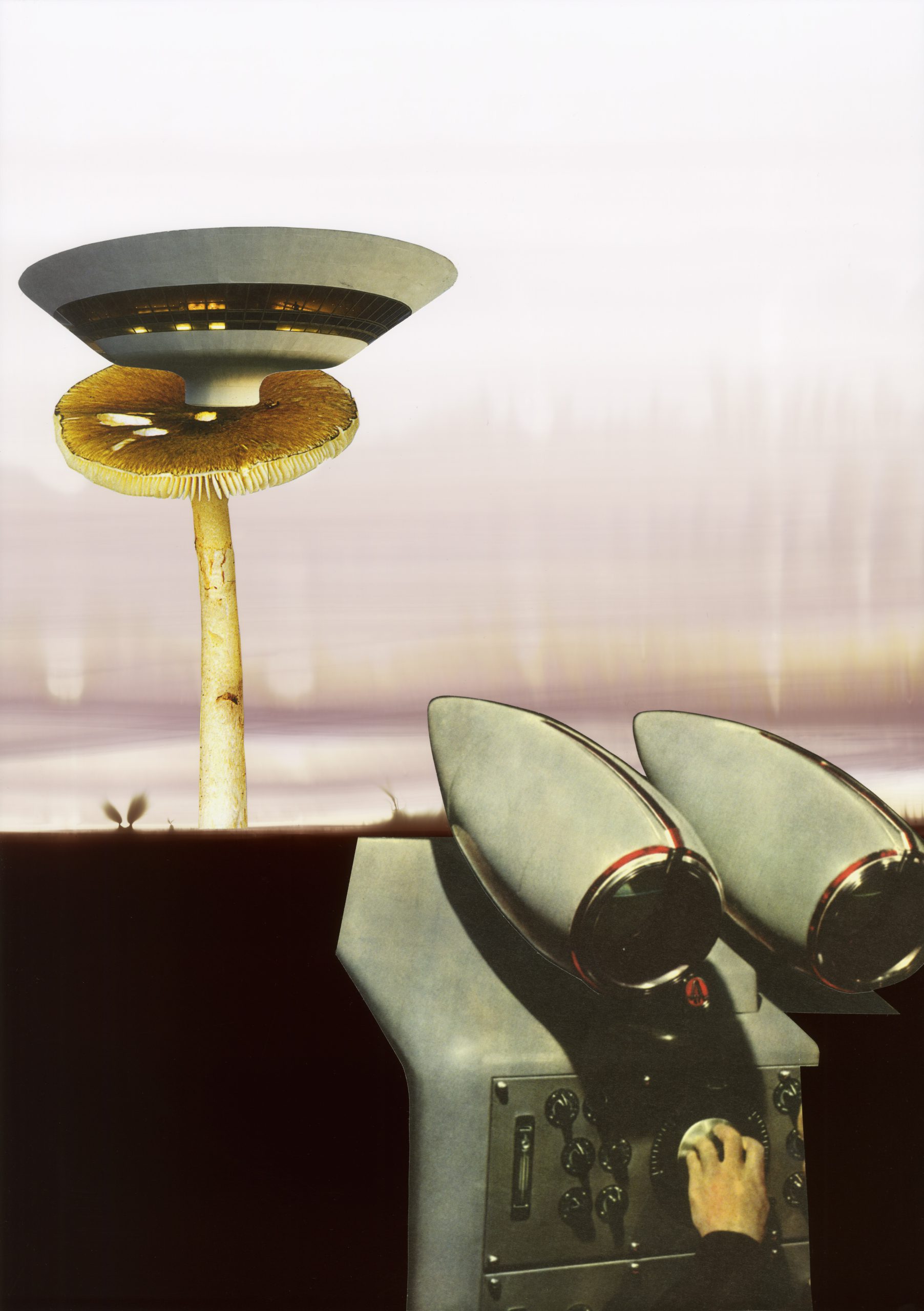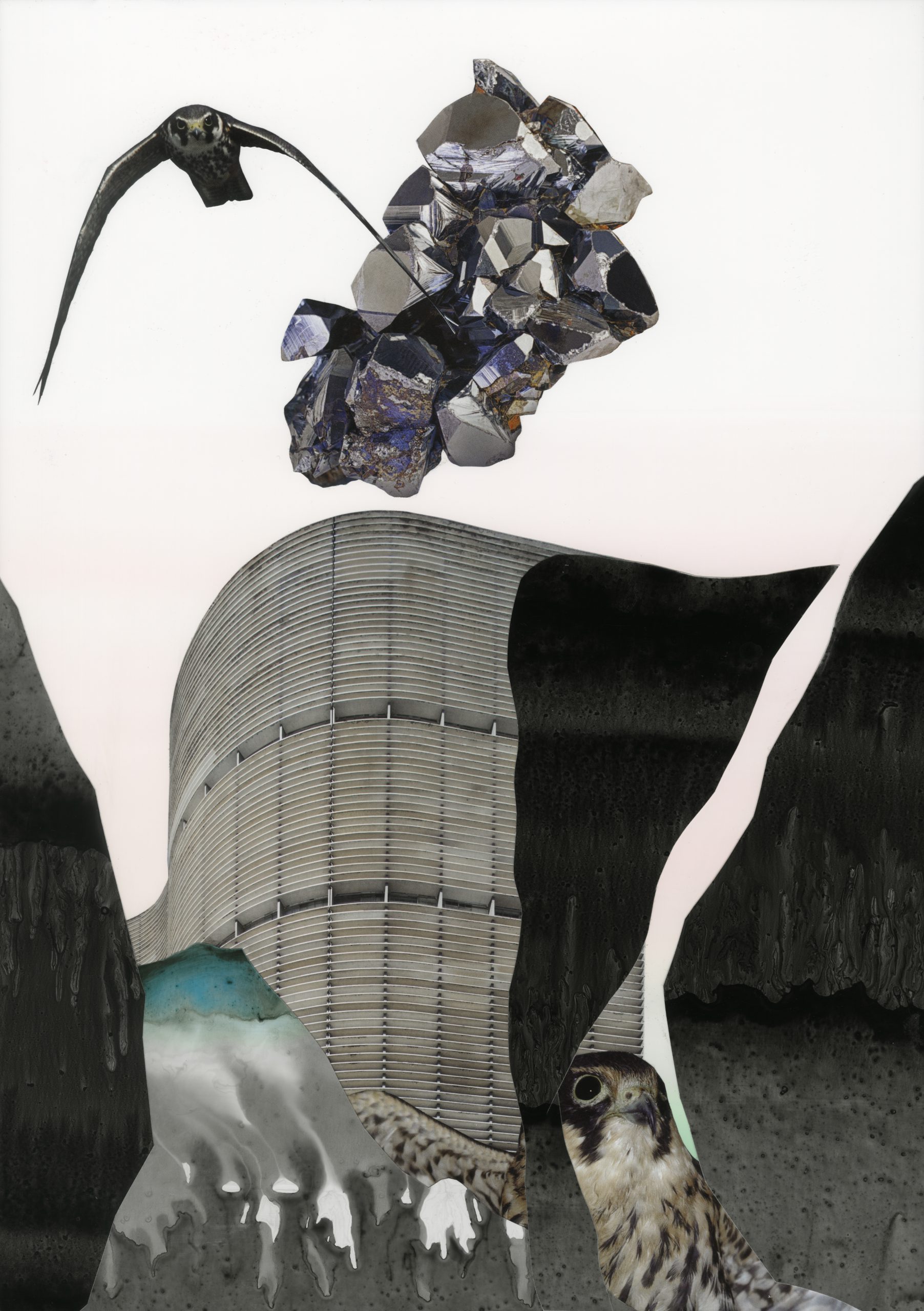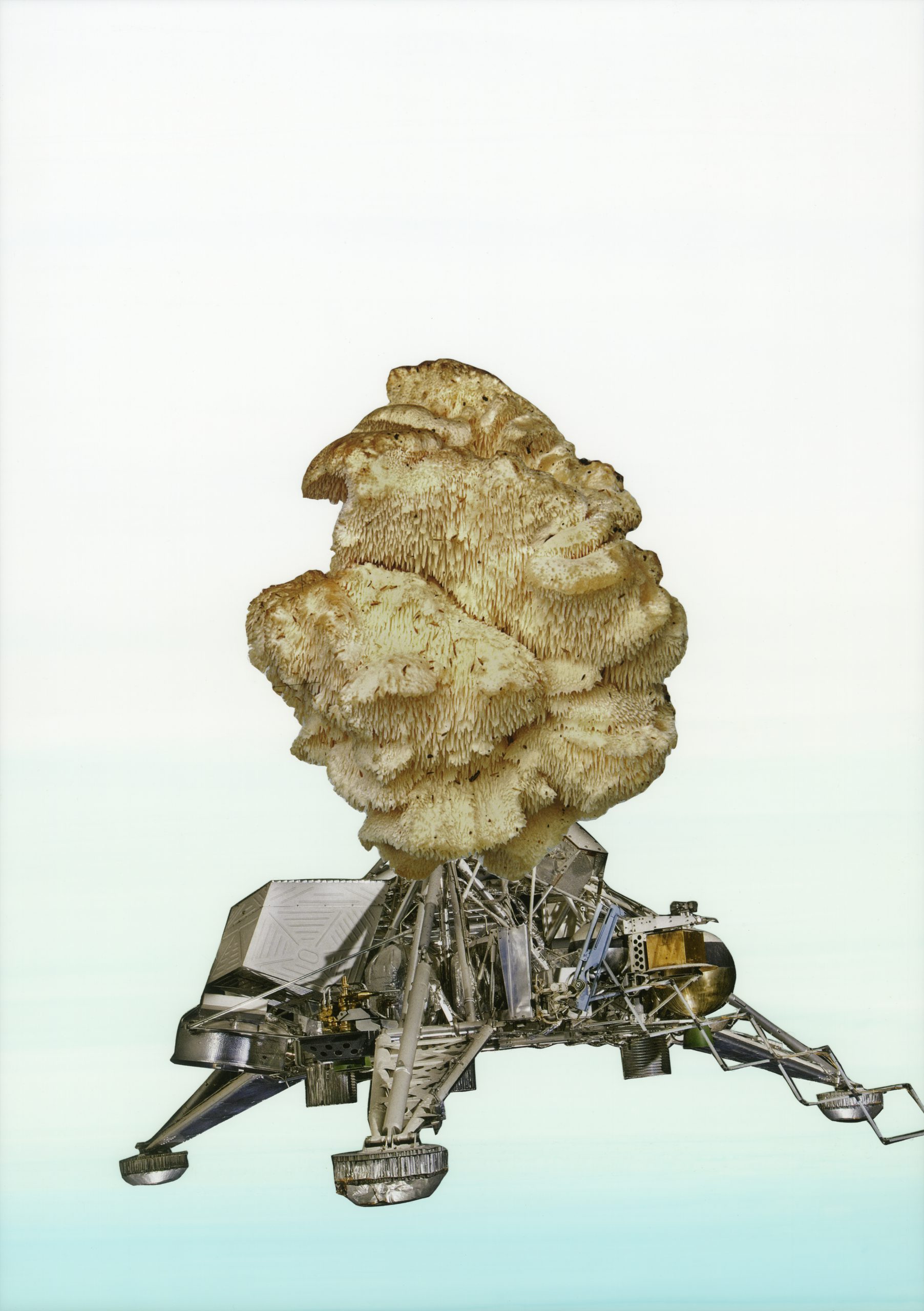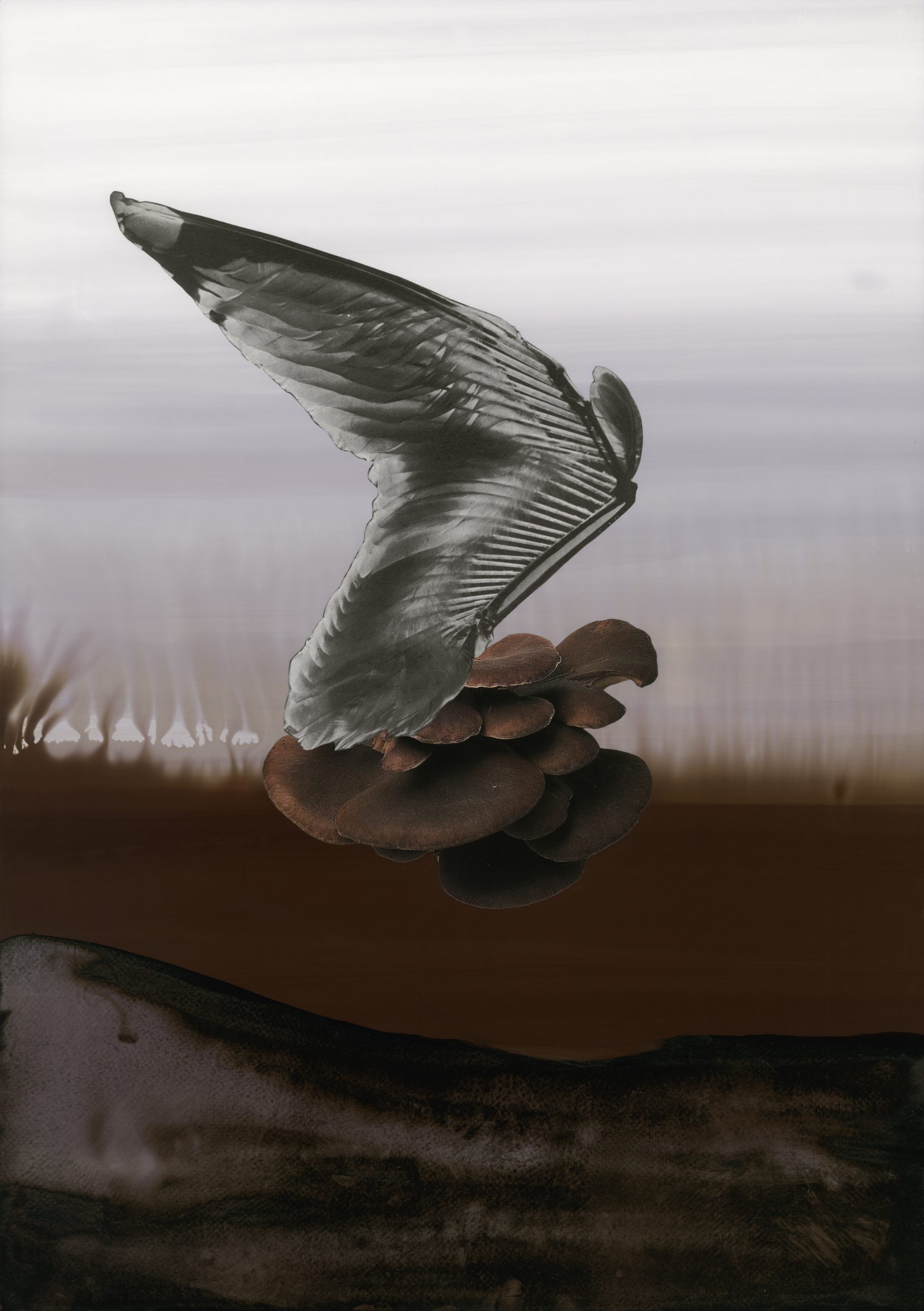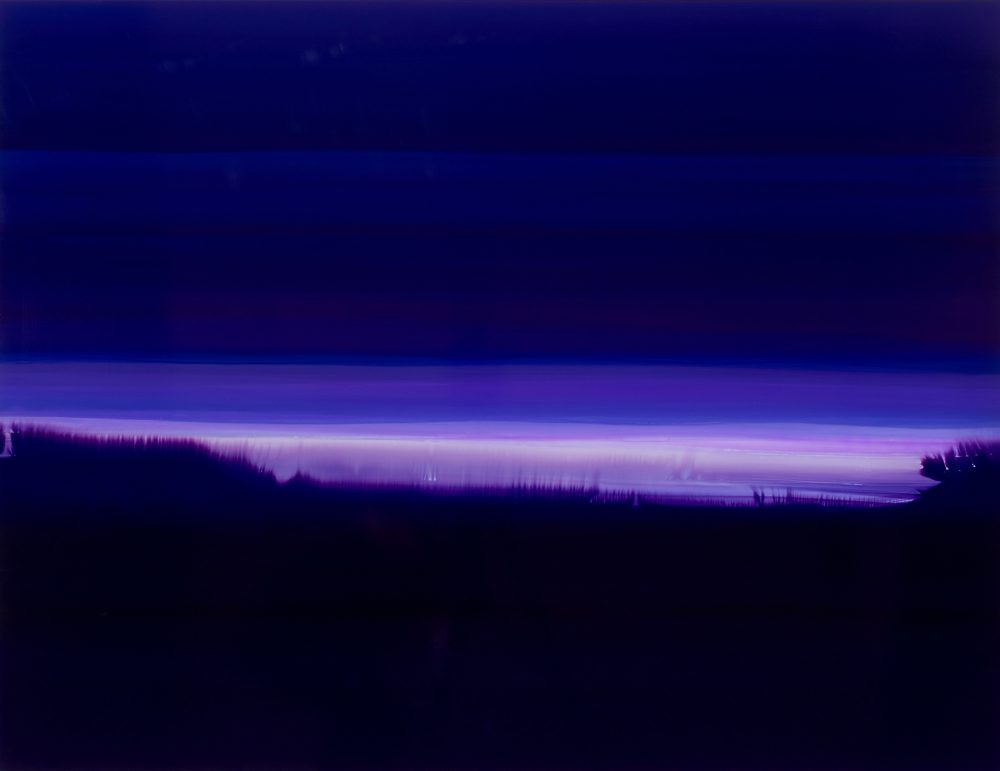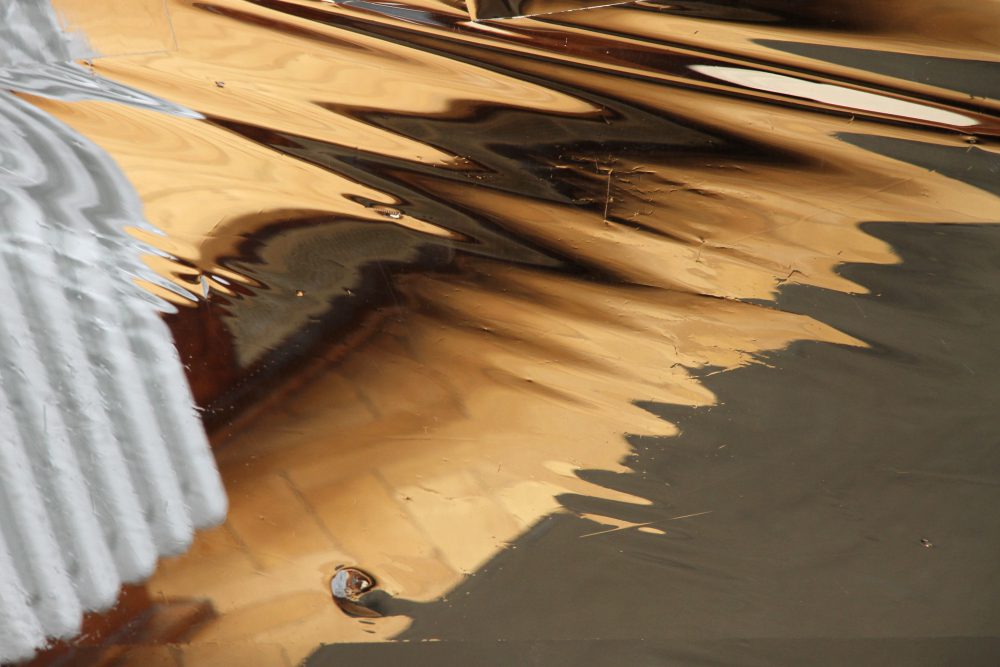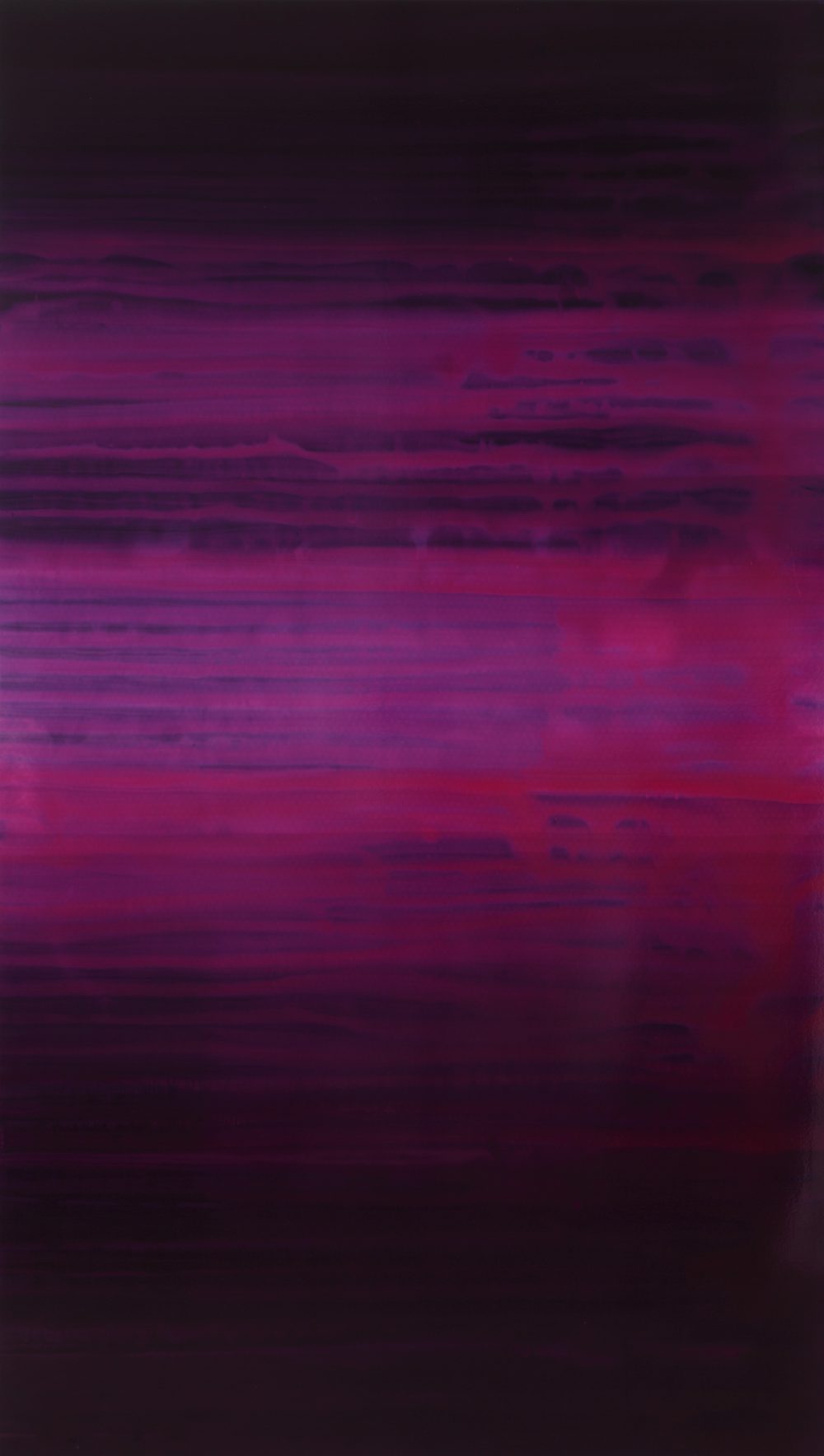Hyperspace
4167 Riemann | Hyper Room
In 1854, mathematician Bernhard Riemann introduced a new geometry of curved, arbitrarily dimensional, ‘exotic’ spaces. This was the first time the concept of hyperspace appeared in the realm of mathematics. A minor planet in the asteroid belt between Mars and Jupiter, number 4167, and a lunar crater were named after him. The series of staged photographs (4167) Riemann I and II show planetary-like structures made of coloured paper scraps floating in space. In Hyper Room #1 and #2, the papers are piled up on a reflective surface and are observed by themselves in a next dimension.
Flächenland
The line constructions on the photographic paper works are inspired by Edwin A. Abbott’s 1884 text Flatland. The text is a social critique and a mathematical essay as well. The narrative is set in a two-dimensional world consisting only of lines and plains. It describes a society that acts despotically and murderously, believing itself to exist in ‘real’ reality. Graphic structures float above a colour-altered horizon. They suggest importance. In a higher-dimensional world, they may be significant.
The Simulation Game
Copy and Raw
The exhibition for ever and ever (BIS, Mönchengladbach, 2014) deals with the value of originals and reproductions. A painted work is photographed and positioned next to the original as a creatively exact copy with slightly different colours. What is visible?
The work ‘Kopie’ is painted, photographed, and the photograph is then inscribed with paint. Original, reproduction, and original again as different stages of existence of an original.
